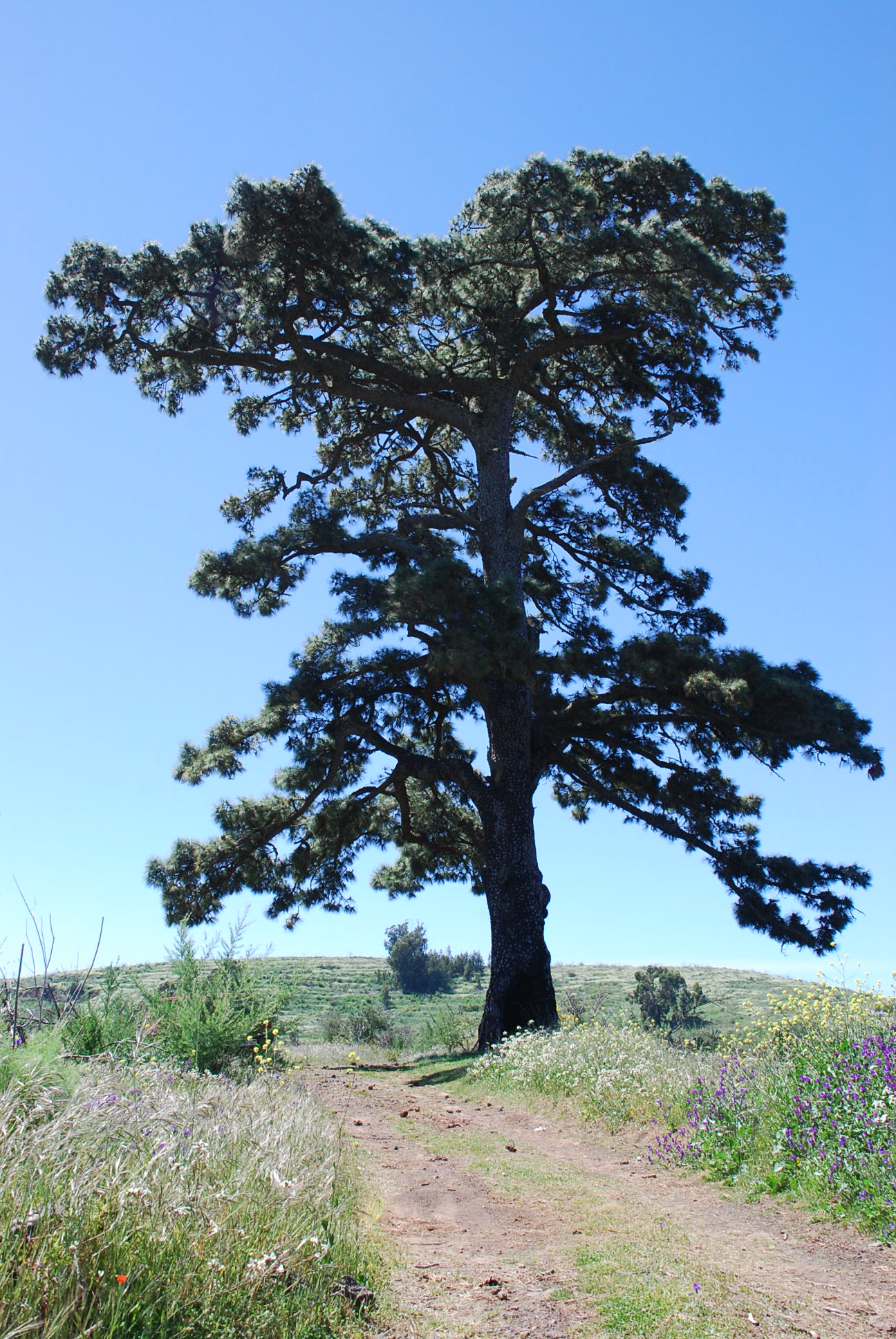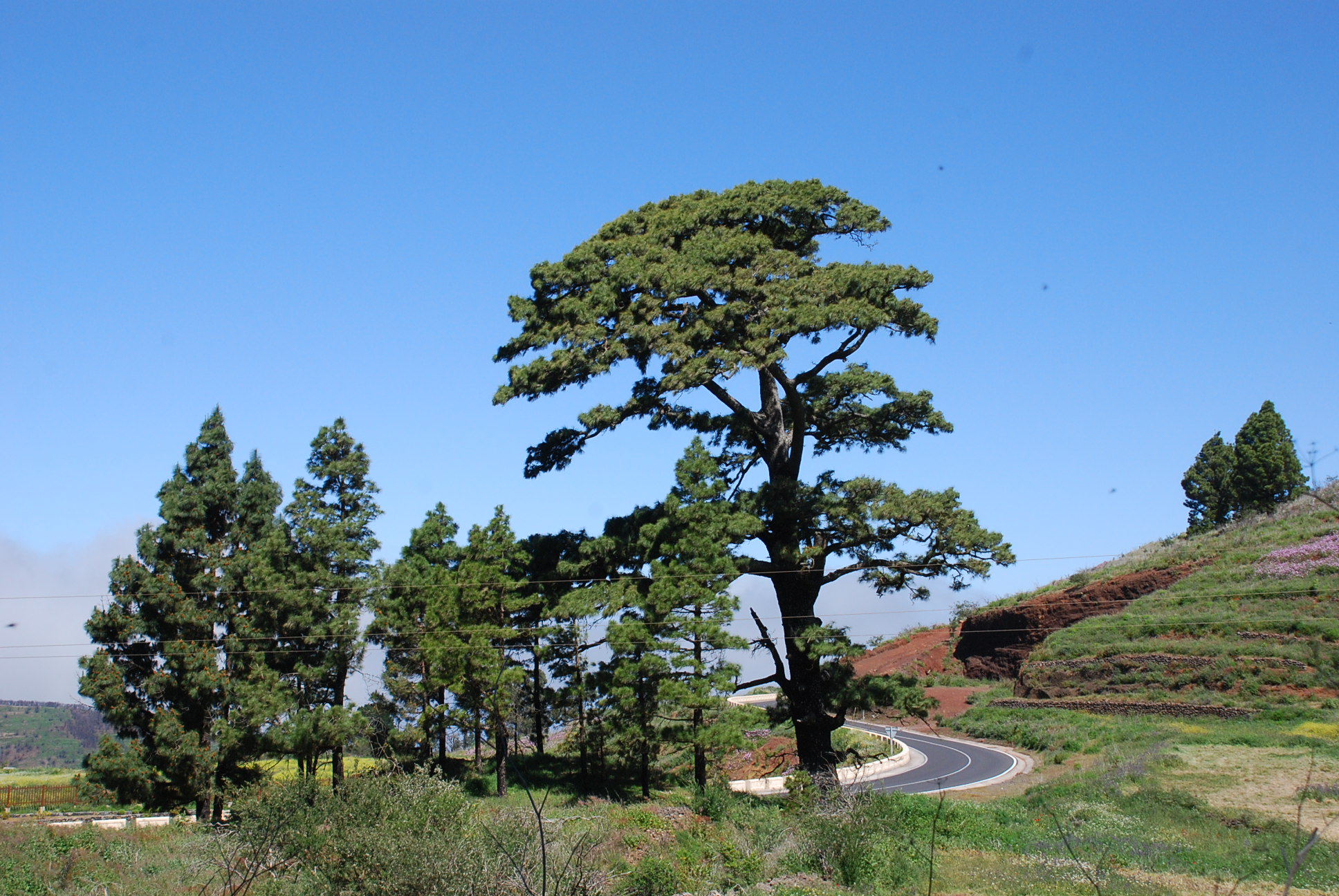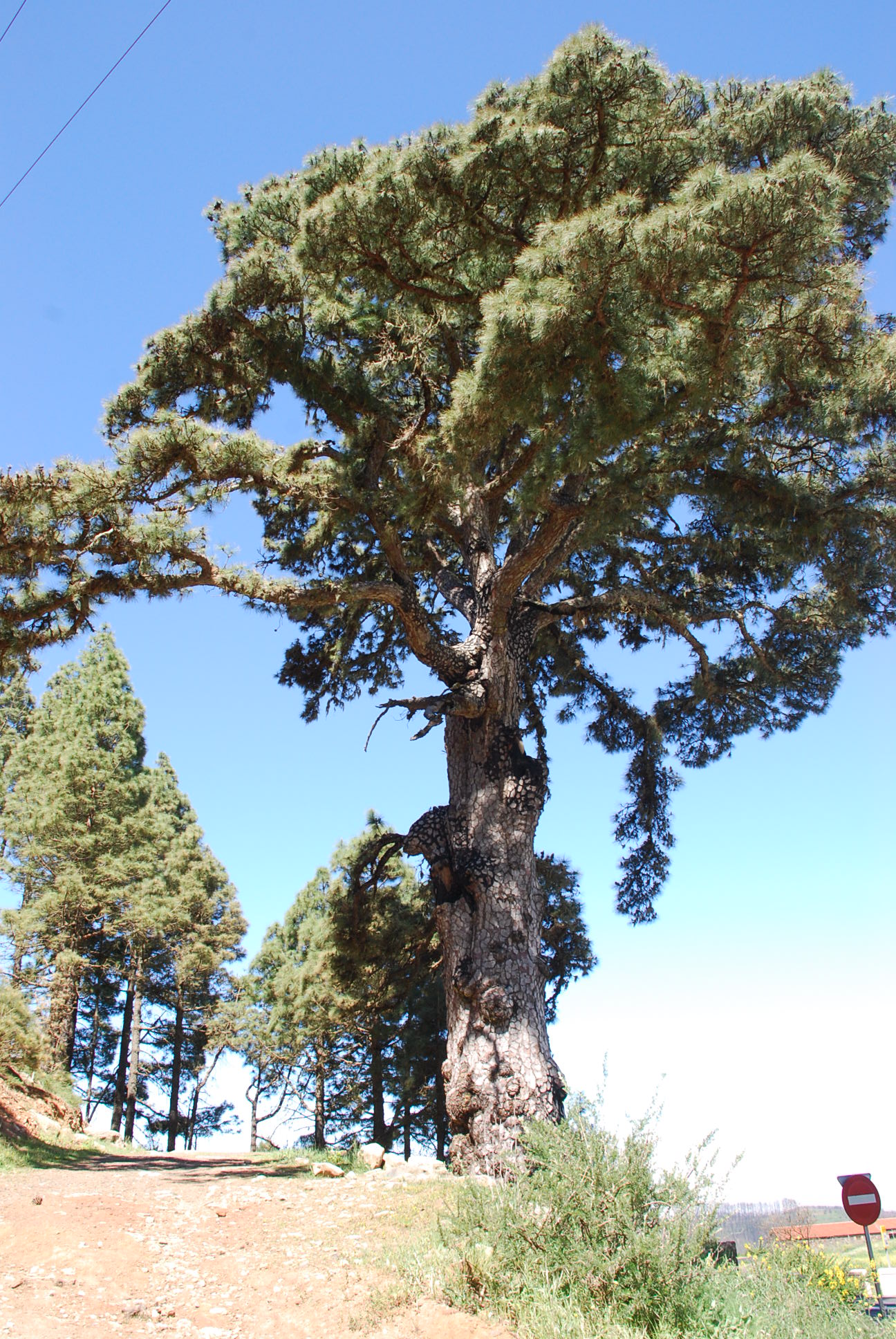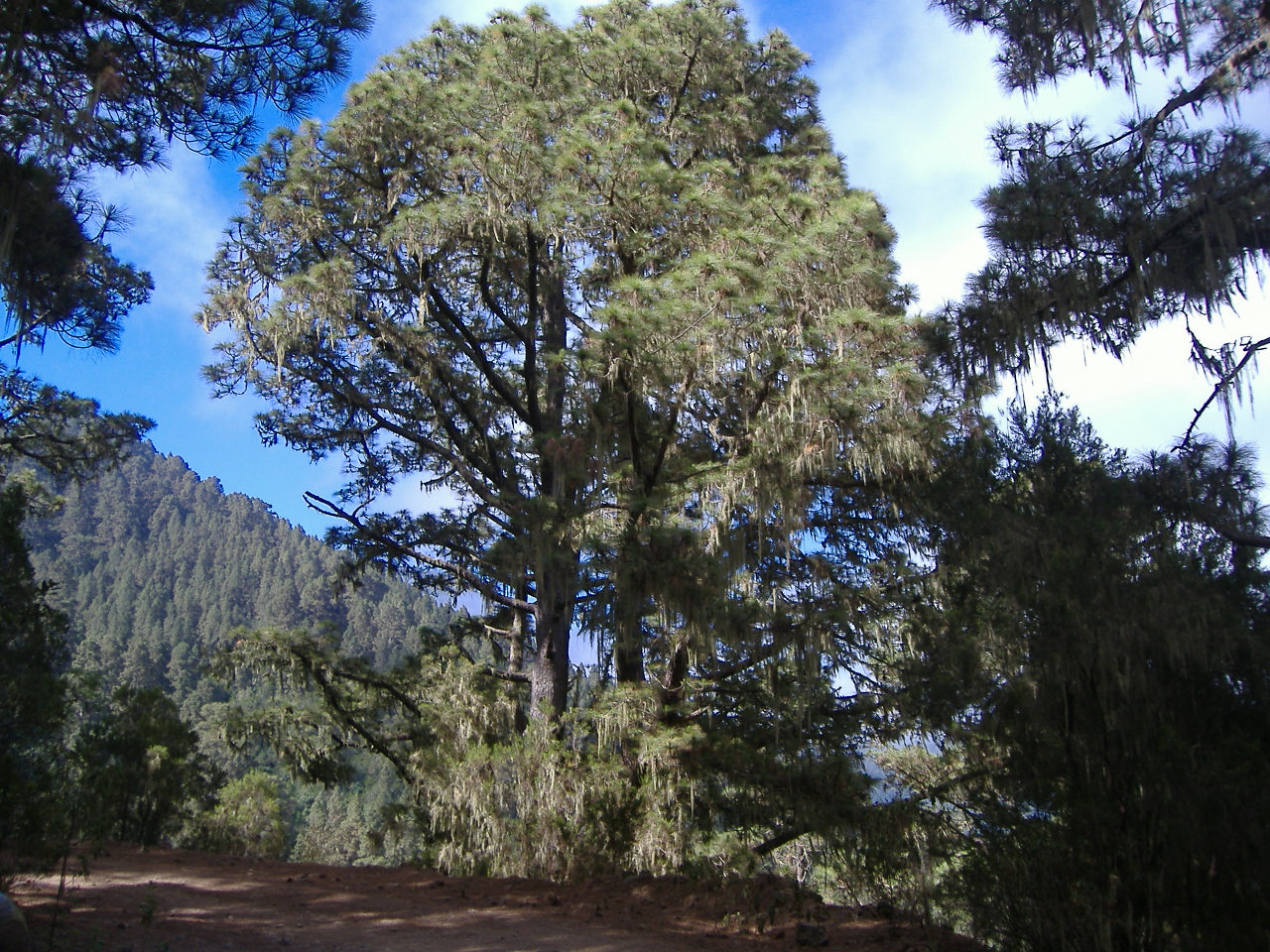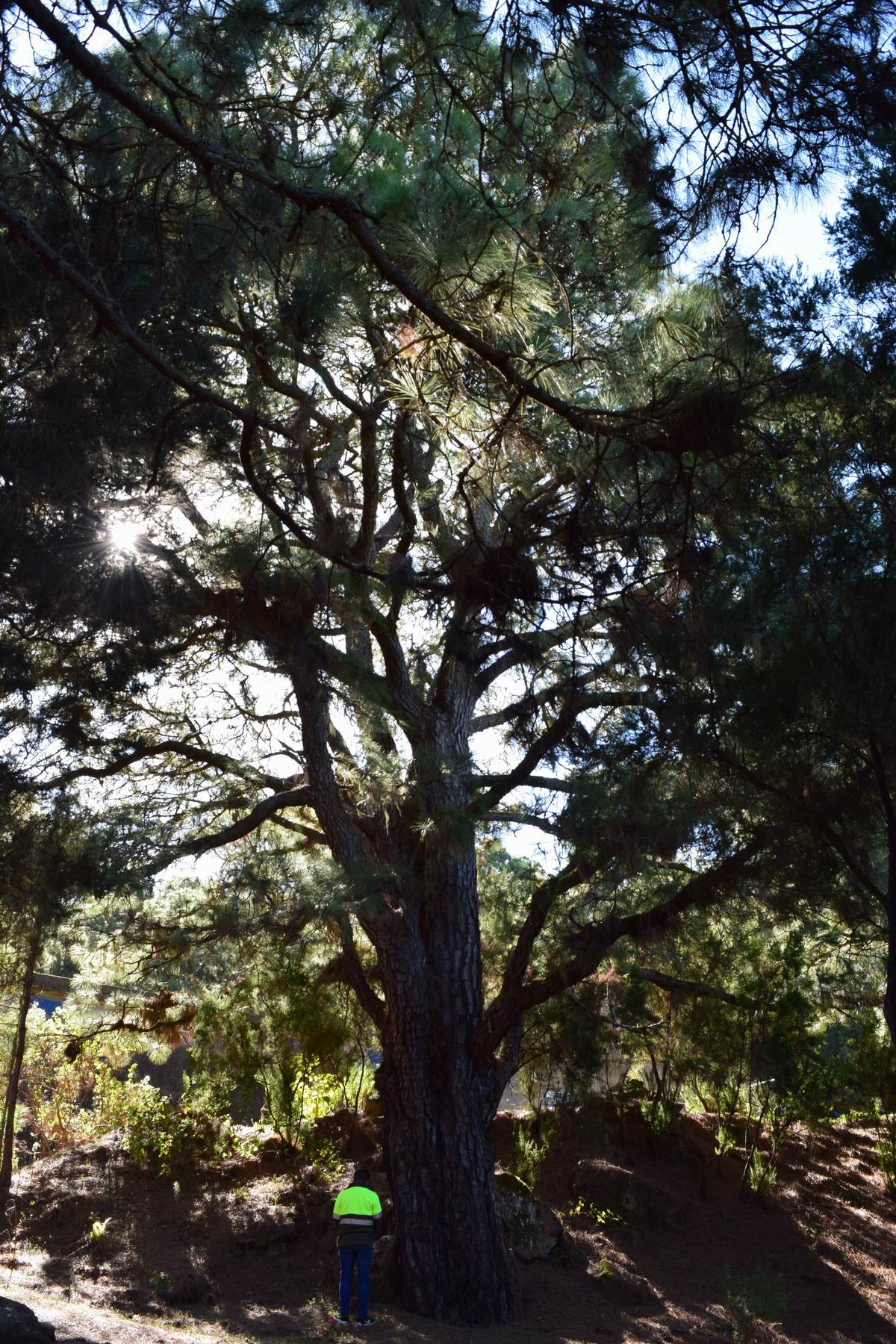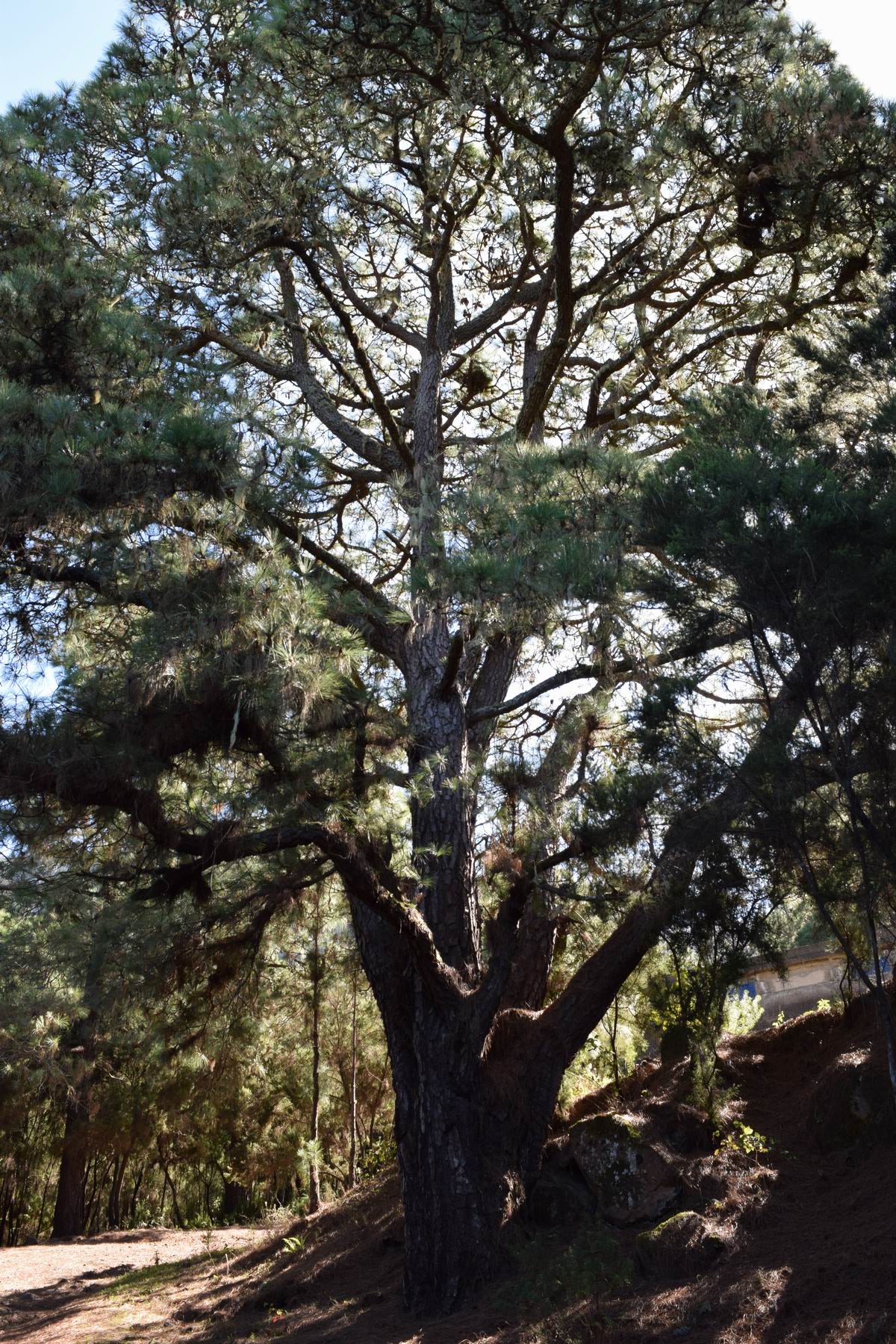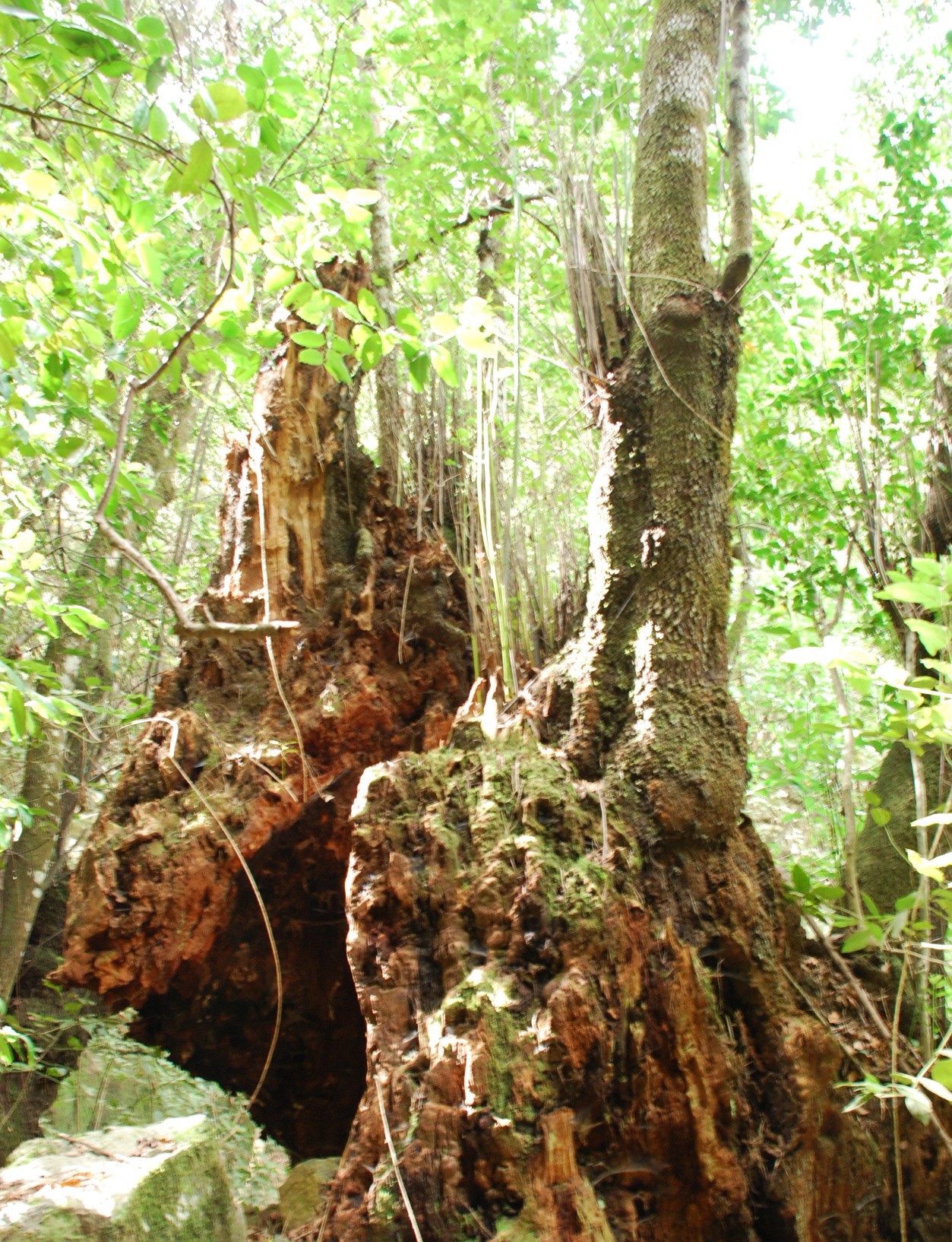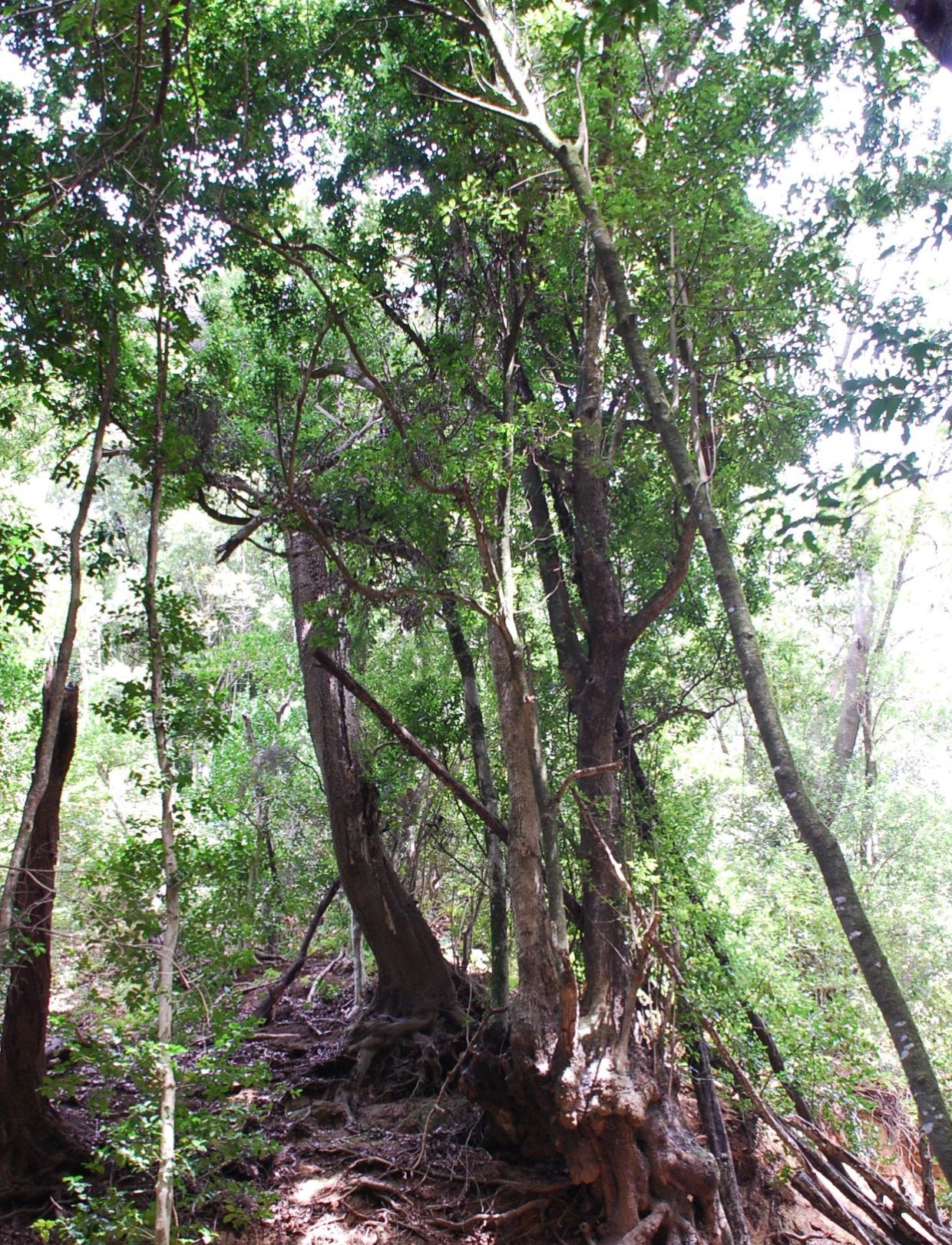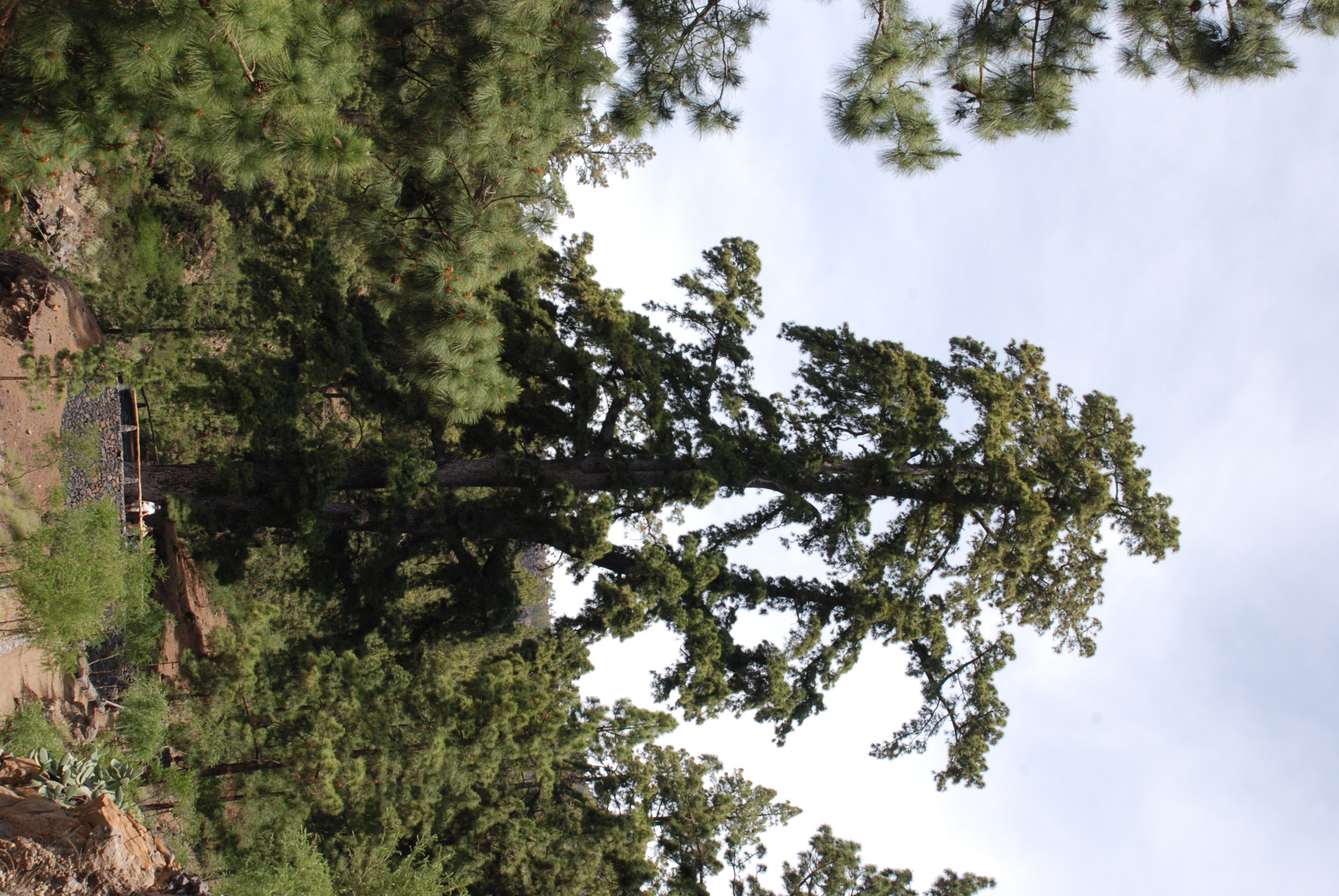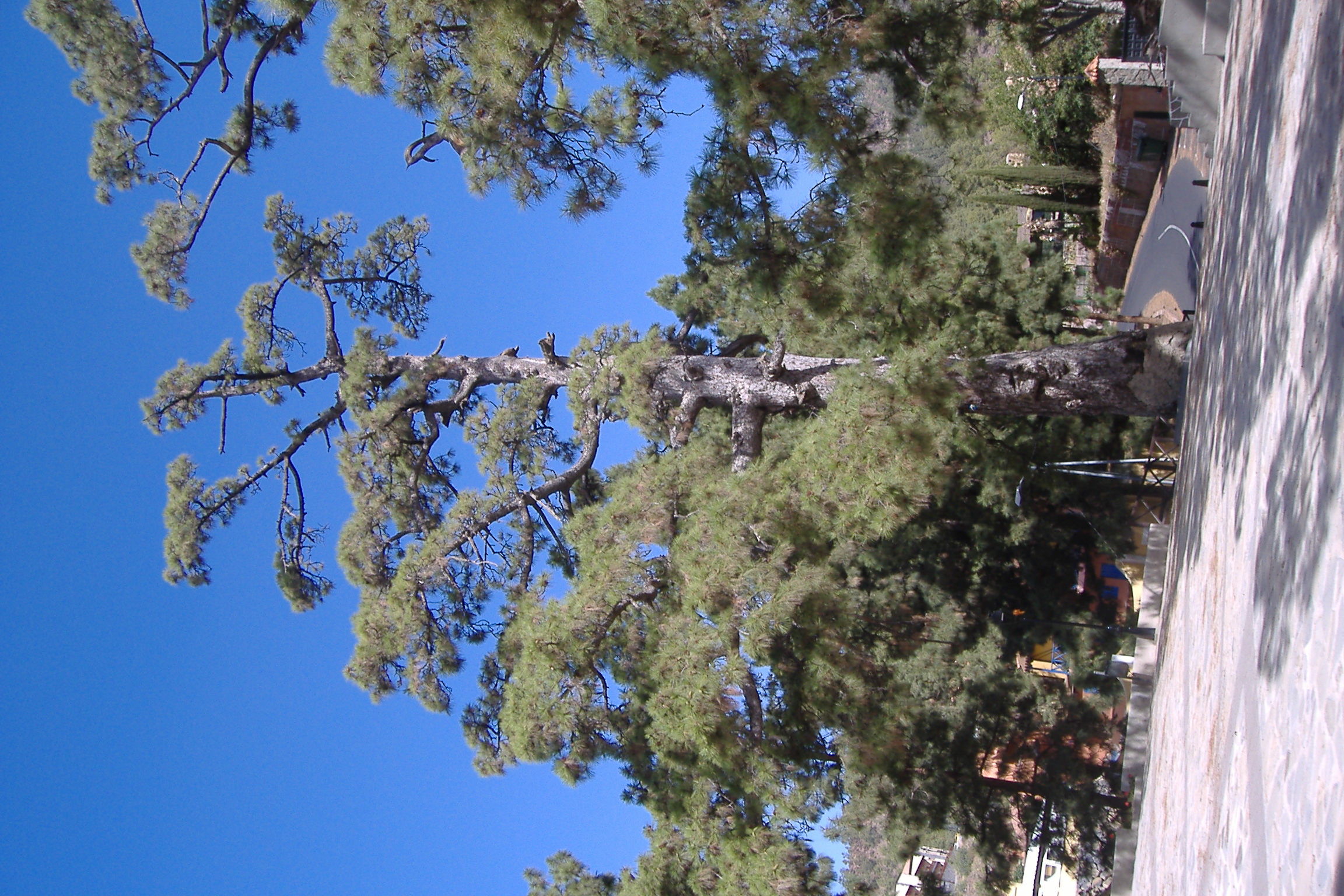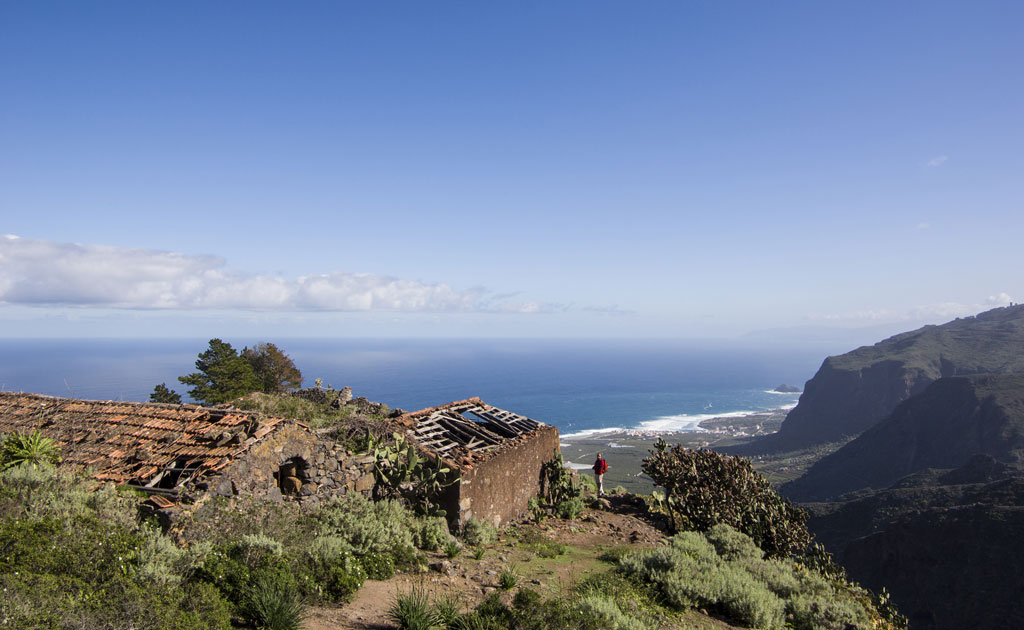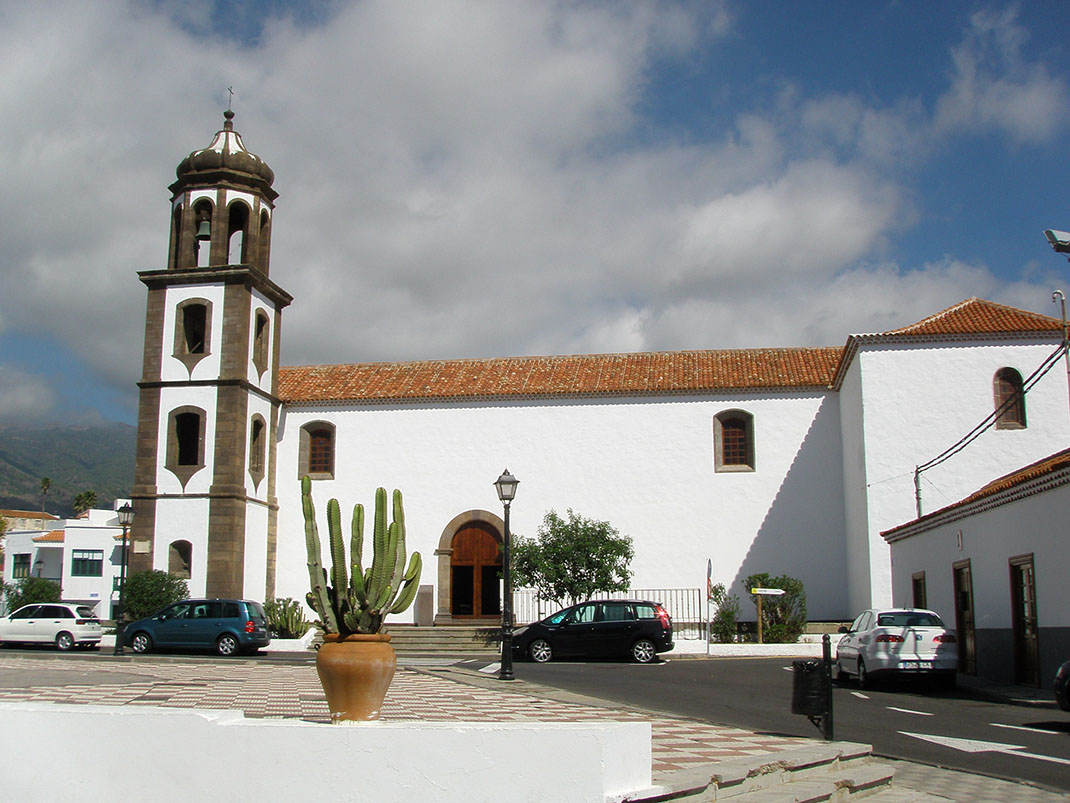Monumental trees on the network of trails
There is a long list of monumental trees on the island of Tenerife. Some of them, found on the Tenerife ON trail network, are described below.
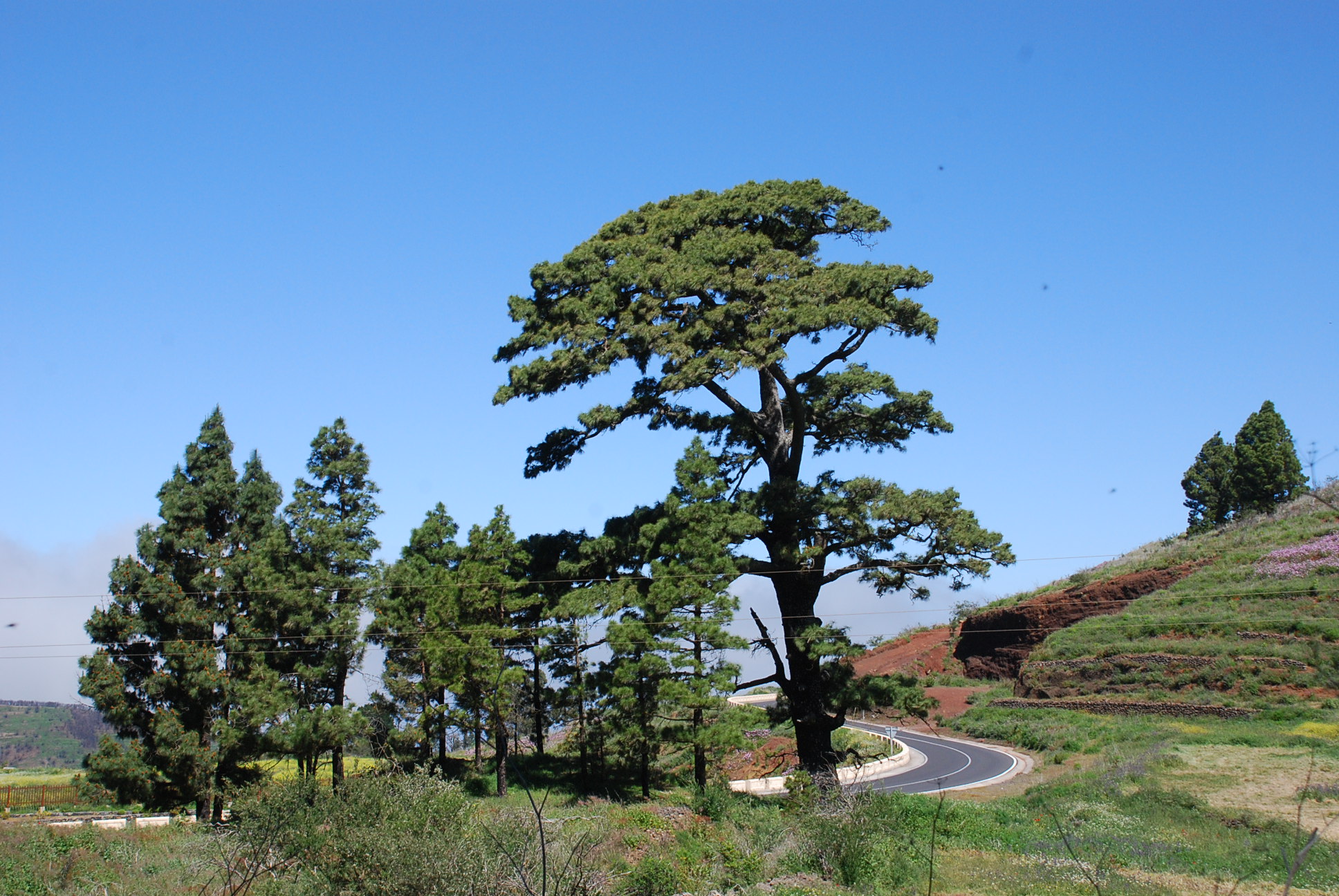
Monumental trees on the network of trails.
There is a long list of monumental trees on the island of Tenerife. Some of them, found on the Tenerife ON trail network, are described below:
- Barbusano (Canary laurel tree), Cuevas Negras (Los Silos). Grows on the basalt wall of the ravine with many suckers sprouting from its base. A landmark for hikers.
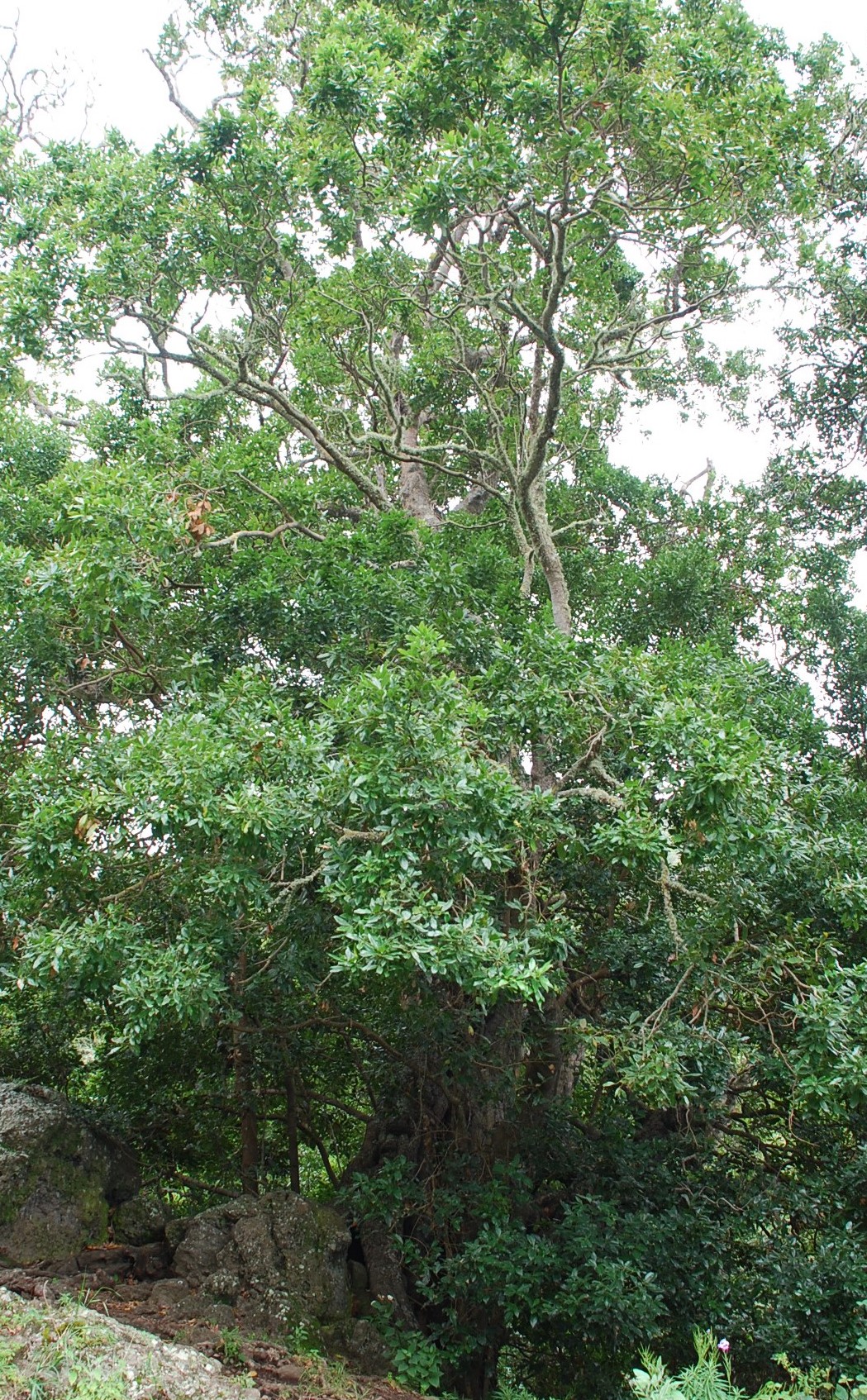
Related trails:
- Palm trees at the Church of San Francisco (Garachico). Group of three male palm trees. Fine looking trees surrounded by a circular parterre with heights of 6, 7 and 8 metres. Their girths are 1.45, 1.60 and 1.87 metres. Noted for their beauty and for adding character to this historic building and traditional part of the town centre. Used as the setting for various festivals.
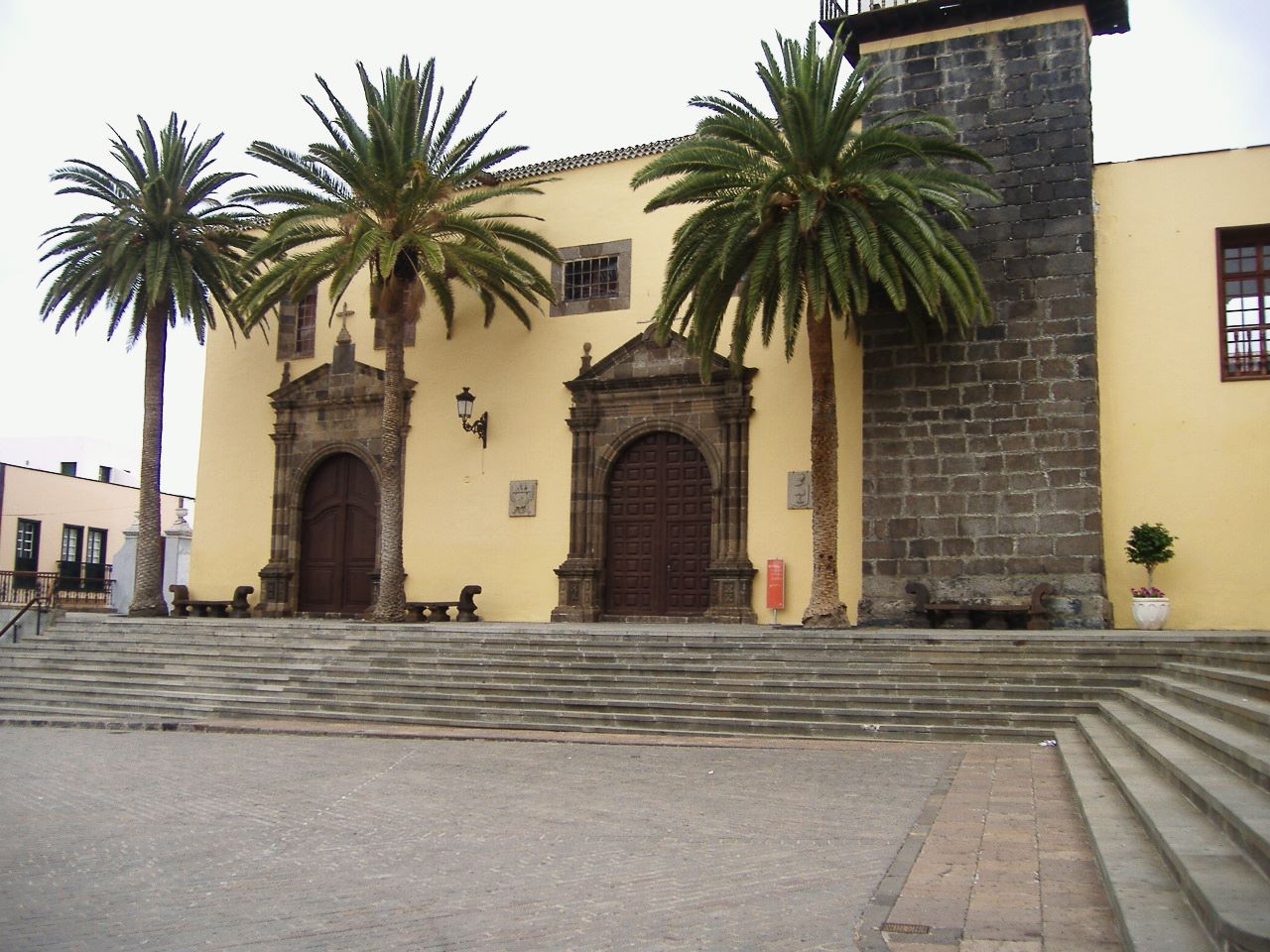
Related trail:
- Los Tres Pinos / Pino de las Tres Pernadas (Garachico). Pine tree that splits into three large trunks 60 centimetres above the ground. Surrounded by an undergrowth of fayal-brezal (Morella-Erica heath), the trunk’s girth at the base is 7.30 metres.
Related trails:
- Pine tree at the place where the Ox spoke (Garachico). It is said that a team of oxen was hauling wood along the track when one ox fell, exhausted, to its knees. The oxherd beat the ox to force it to stand up and the other ox, in its defence, said: “hang in there my friend or our master will suffer”. The tree has five trunks, three forking from the base.
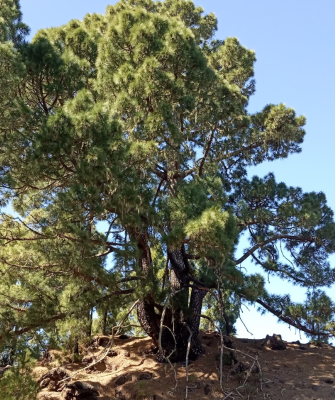
Related trails:
- Poplar at La Hoya (El Tanque). Its bark was used for medicinal purposes. It used to be 13 metres tall, but a storm split many of its branches. At the base of its trunk is a hollow where a more robust trunk than the current one used to grow. Today there are several suckers coming out of its base and it leans slightly to one side.
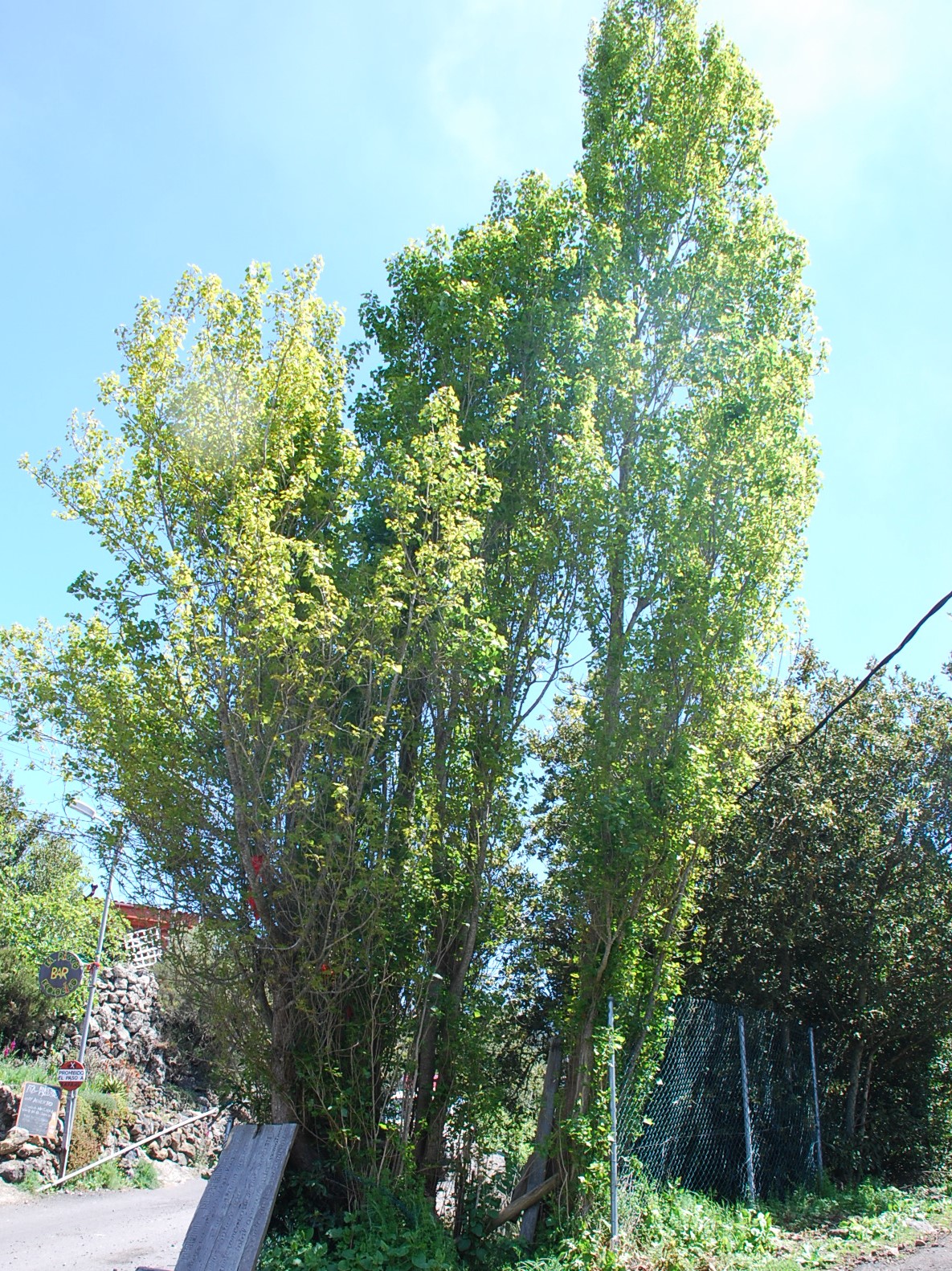
Related trails:
- Nica Pine (El Tanque). With a hollow 170 centimetres high, 85 centimetres wide and 60 centimetres deep. A solitary tree on one side of the track leading to Los Partidos de Franquis. Epiphytic lichens and hare’s-foot fern (Davalliacanariensis) grow on its north side.
Related trails:
- Cercado de las Mulas Pine (El Tanque). With a hollow 230 centimetres high, 100 centimetres wide and 80 centimetres deep at 80 centimetres above the ground. This pine tree is located in an area where other “parent pines”, such as the Trebejo Pine, the Nica Pine and the Loro Pine, can be found.
Related trails:
- Loro Pine (El Tanque). Its name comes from a laurel that grows on one of its forking trunks. Bramble, hare’s-foot fern (Davalliacanariensis) and epiphytic lichen also grow on its trunk. The tree is clearly visible from the road, which is why many tourists stop to take a picture in its shade.
Related trails:
- Pino Rey (La Orotava). With acebiño (Ilex canariensis) and tree heath (Erica arborea) growing at its base.This tree contains the highly valued heartwood known as “tea”. The tree forks at a height of two metres.
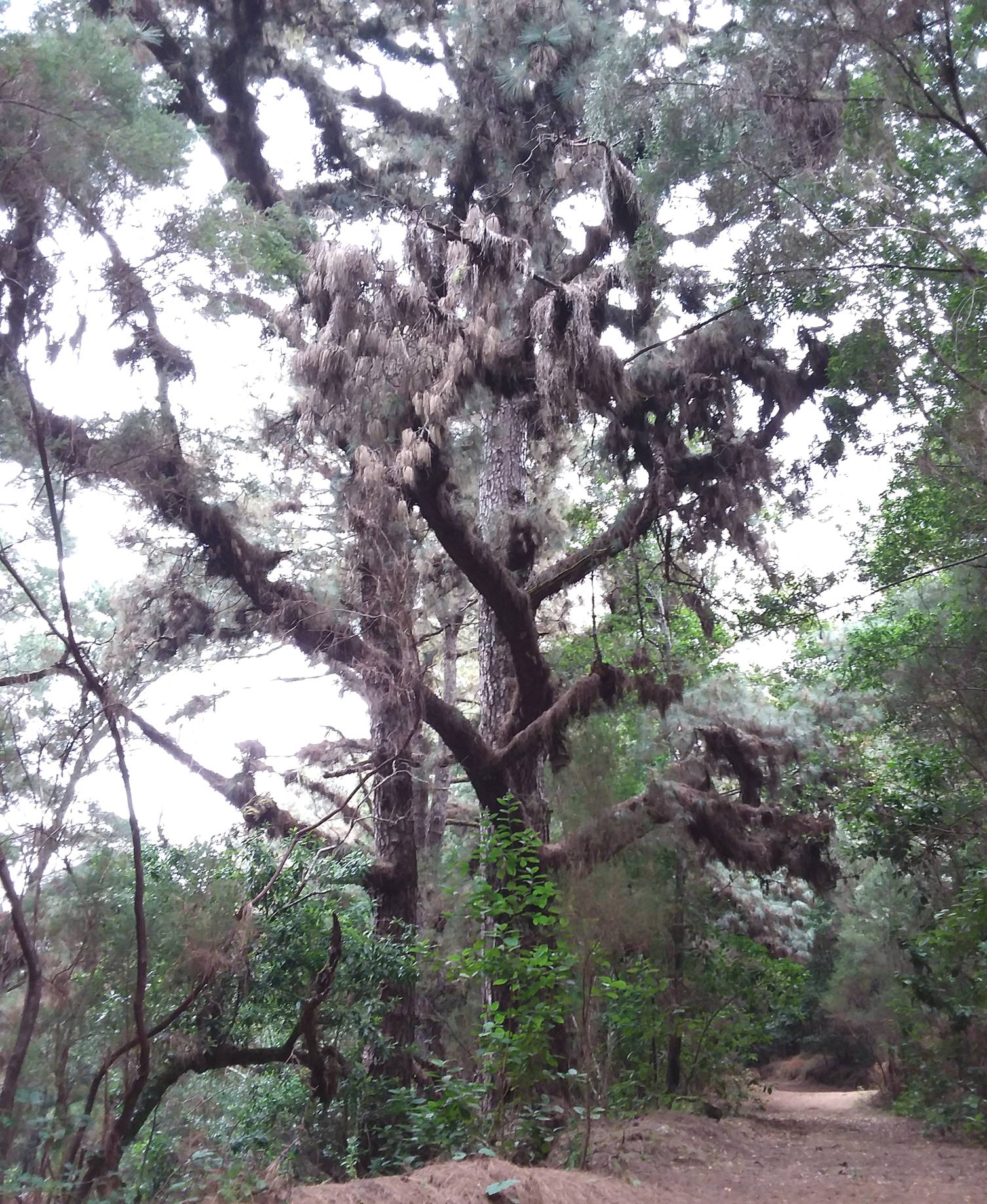
Related trail:
- La Medida Pine (La Orotava). This pine tree forks into three main trunks at a height of 1 metre. In the area, a mixed pine forest, there are numerous large pines with a girth of more than 4 metres, such as Pino de la Quilla and Pino de la Vereda, with a girth of 5 metres.
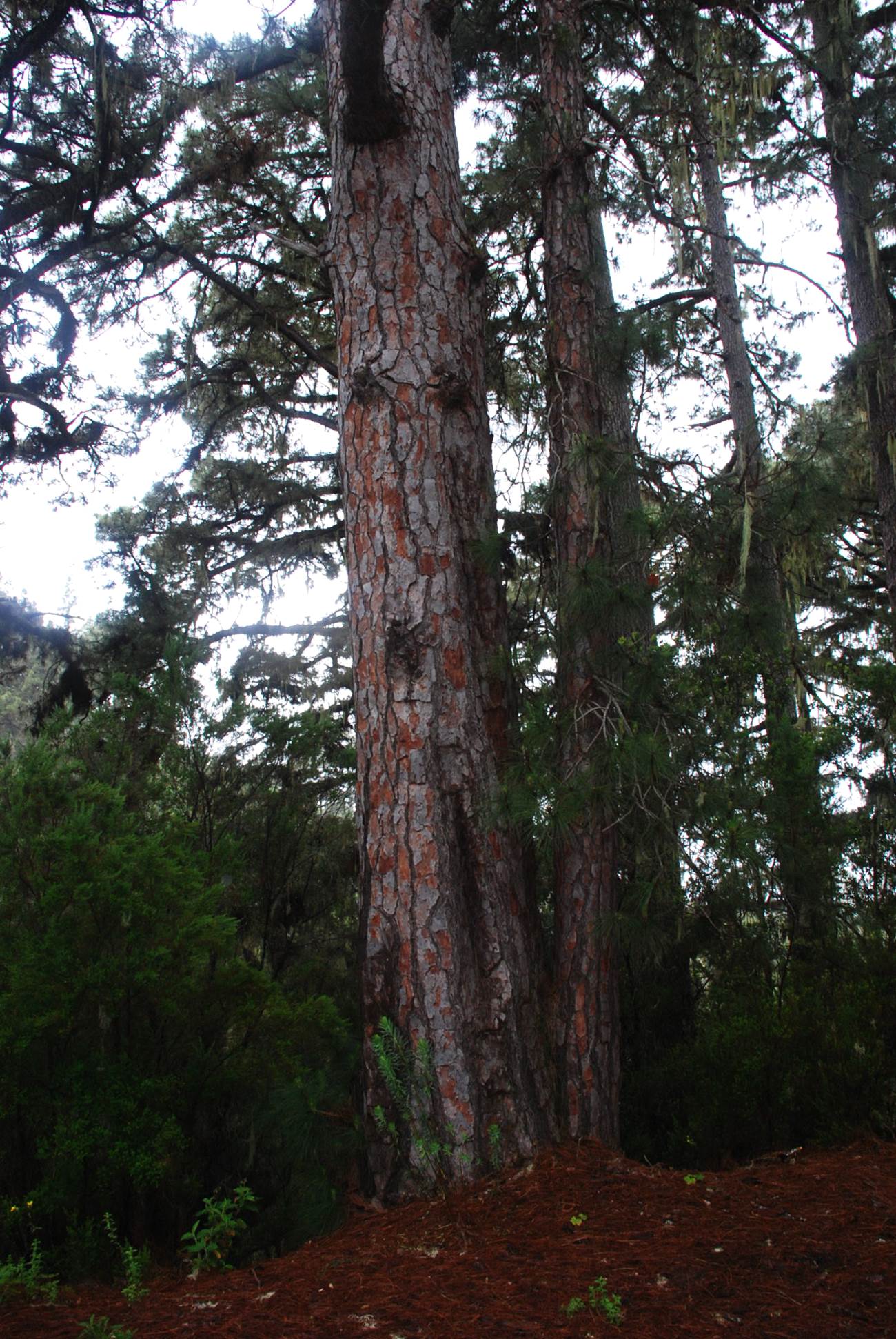
Related trail:
- Pino de la Quilla (La Orotava). This pine tree forks into three main trunks. It resembles the keel of a ship, as a large branch forks out from the base.
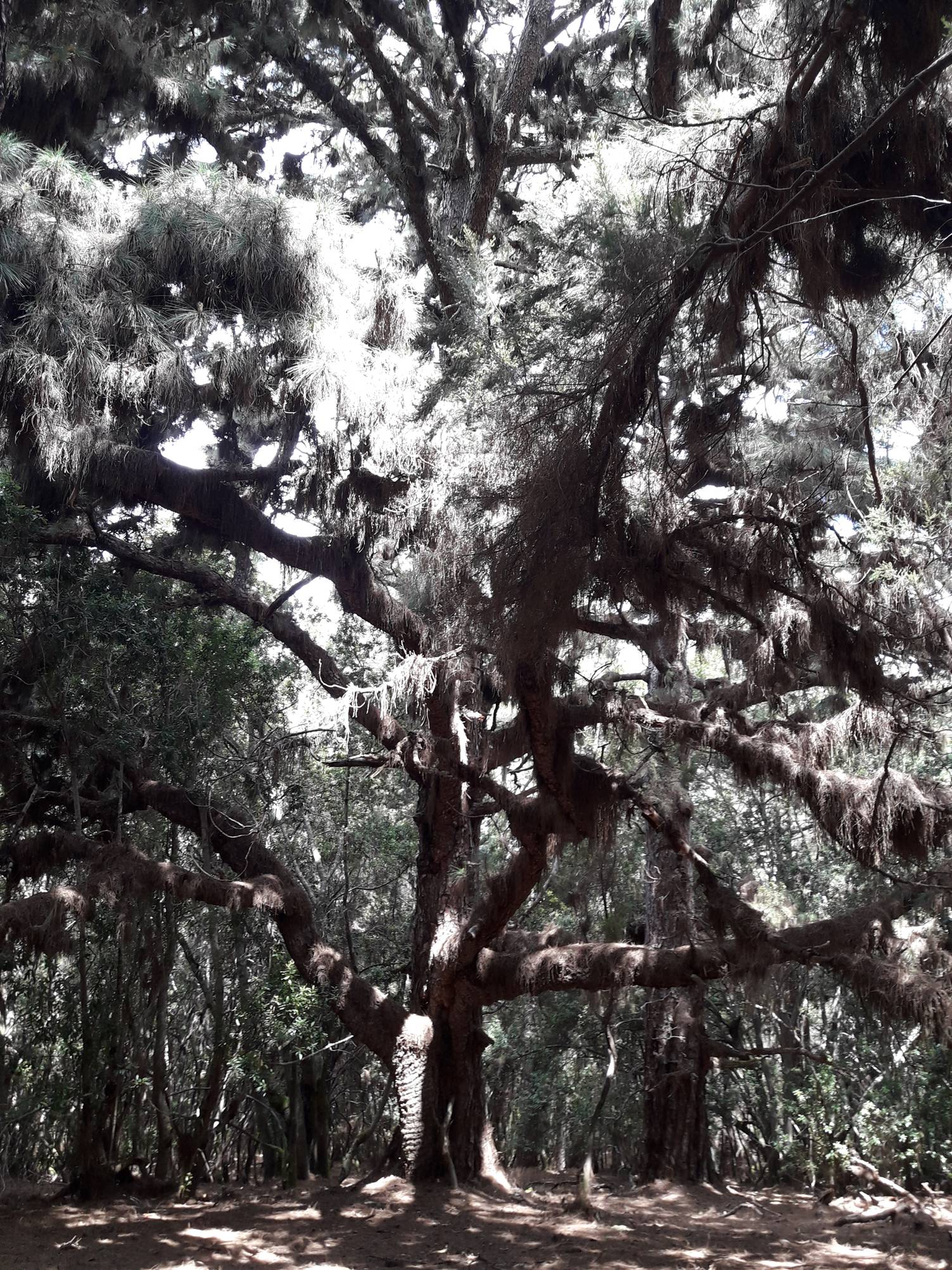
Related trail:
- Pino Santo (La Orotava). This is an extraordinarily large tree that splits into six trunks at chest height, with a total girth of 1053 cm. It leans slightly to the north-west. It is visible from the track that passes nearby. A faya (Morella faya) grows at its base.
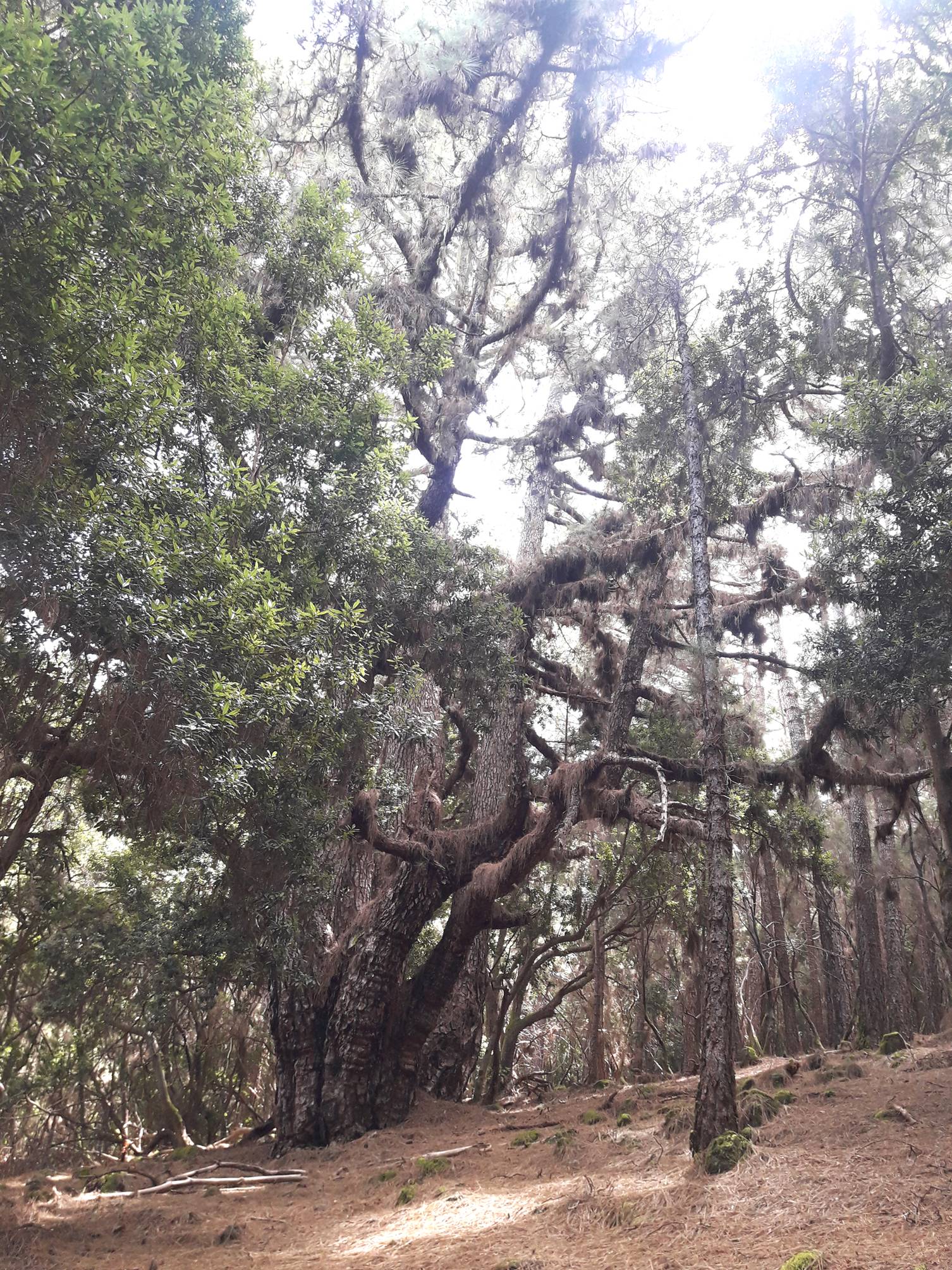
Related trail:
- Faya Santa (La Orotava). Faya (Morella faya) located in a mixed pine forest,that branches out from its base. It is located near the Pino Santo, a remarkable specimen of Canary Island Pine listed as being of Regional Interest.
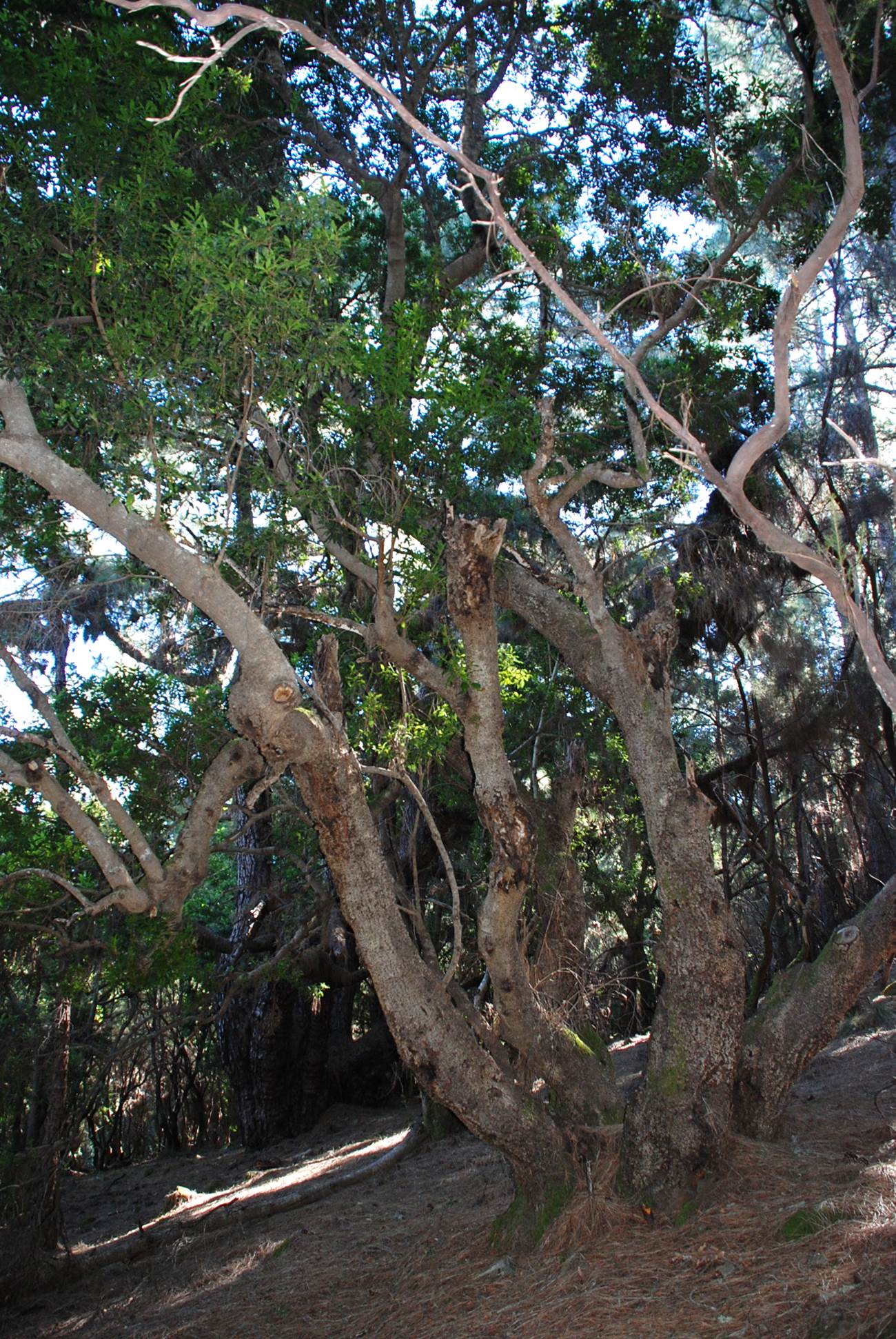
Related trail:
- Faya Gorda (La Orotava). Faya (Morella faya) located on the eastern slope of a small ravine. It has a large, severed branch towards the north-east and forks 130 cm from its base.
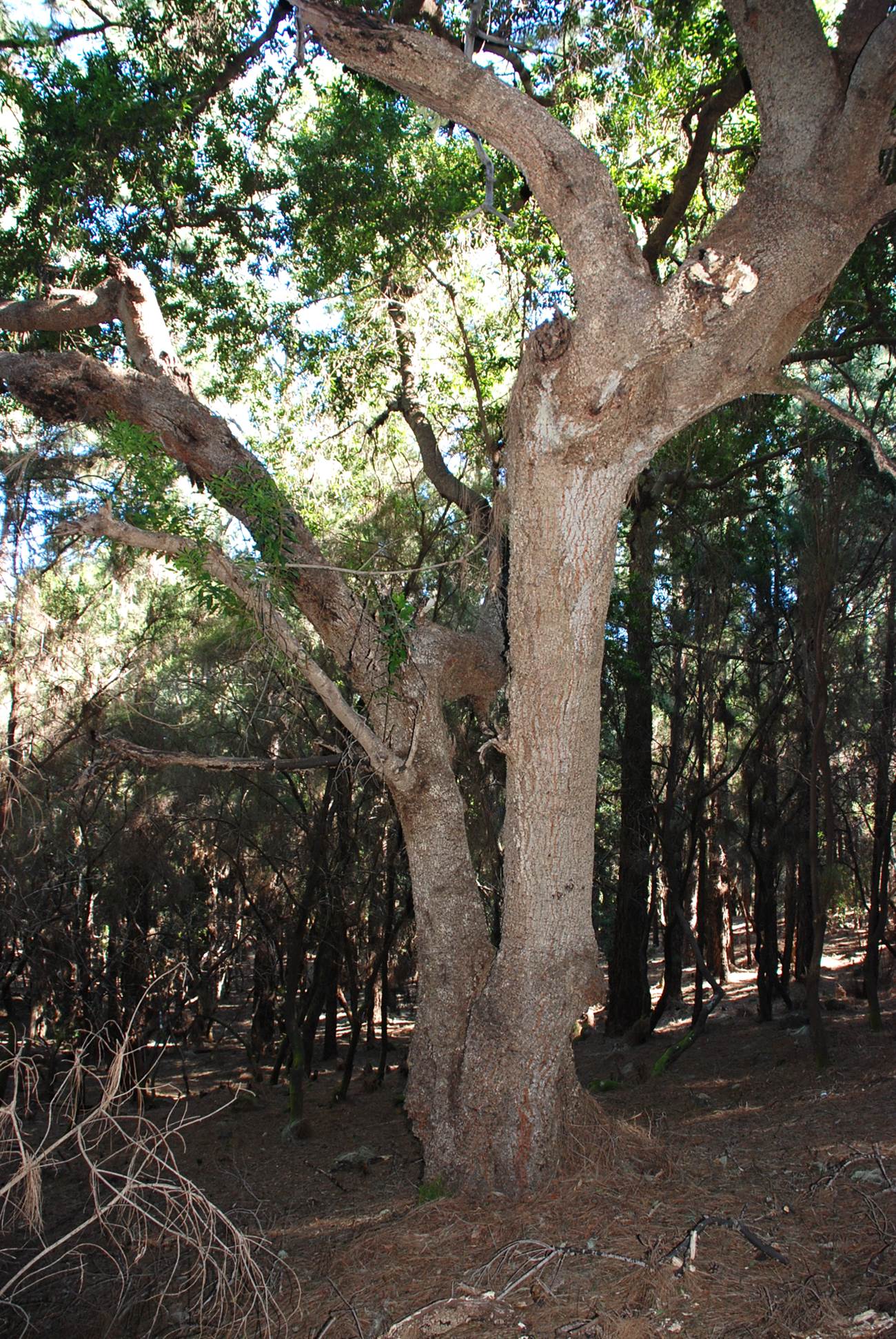
Related trail:
- Pine on the Pista de los Órganos trail (La Orotava). This pine tree is home to epiphytes such as lichens (Usnea) and hare’s-foot fern (Davalliacanariensis), which are indicators of high humidity levels.
Related trails:
- Acebiños (Ilex canariensis) near losÓrganos (La Orotava). Several large specimens in an area dotted with old faya (Morella faya) and tree heath (Erica arborea). They are draped in lichens and mosses. The acebiños are trifurcated (with three main limbs) and have numerous suckers growing from them.
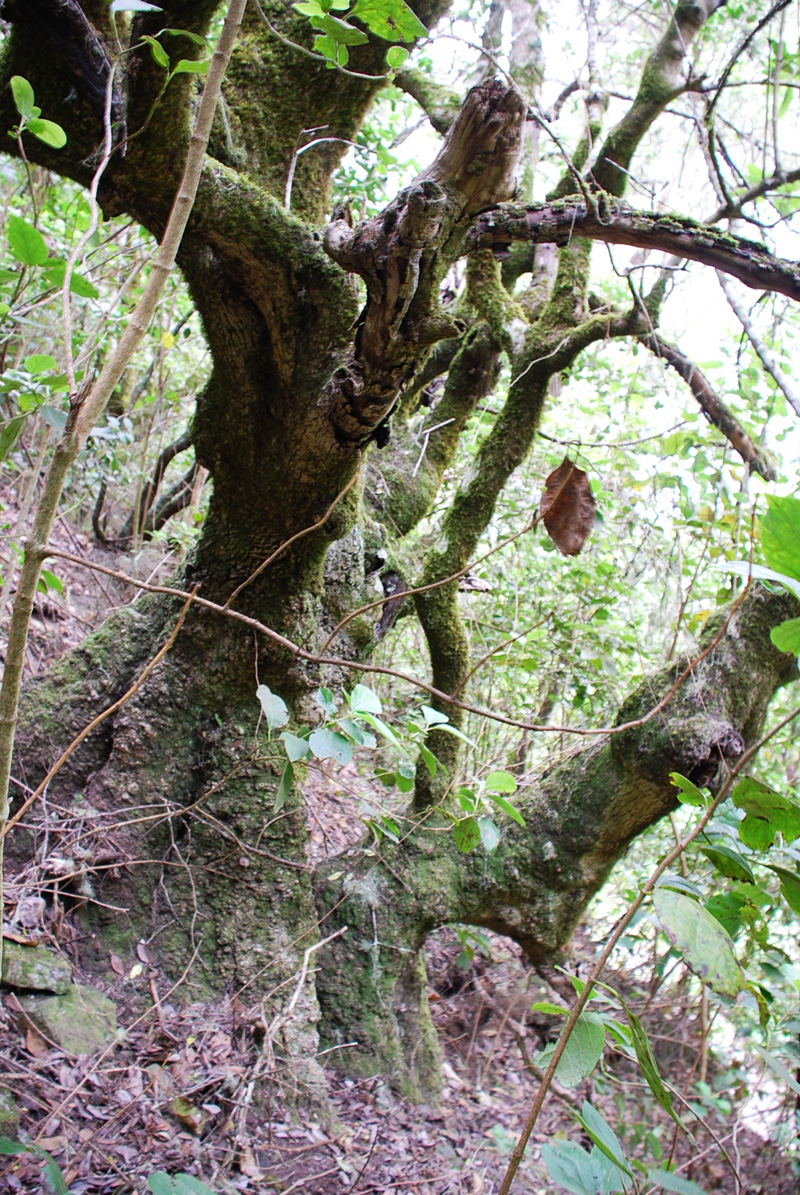
Related trails:
- Pino Lomo del Jaral (La Orotava). Located about 100 metres above the PR 35.2 trail (Ruta del Agua), this pine tree forks into two main limbs. It is located in an area that is difficult to reach.
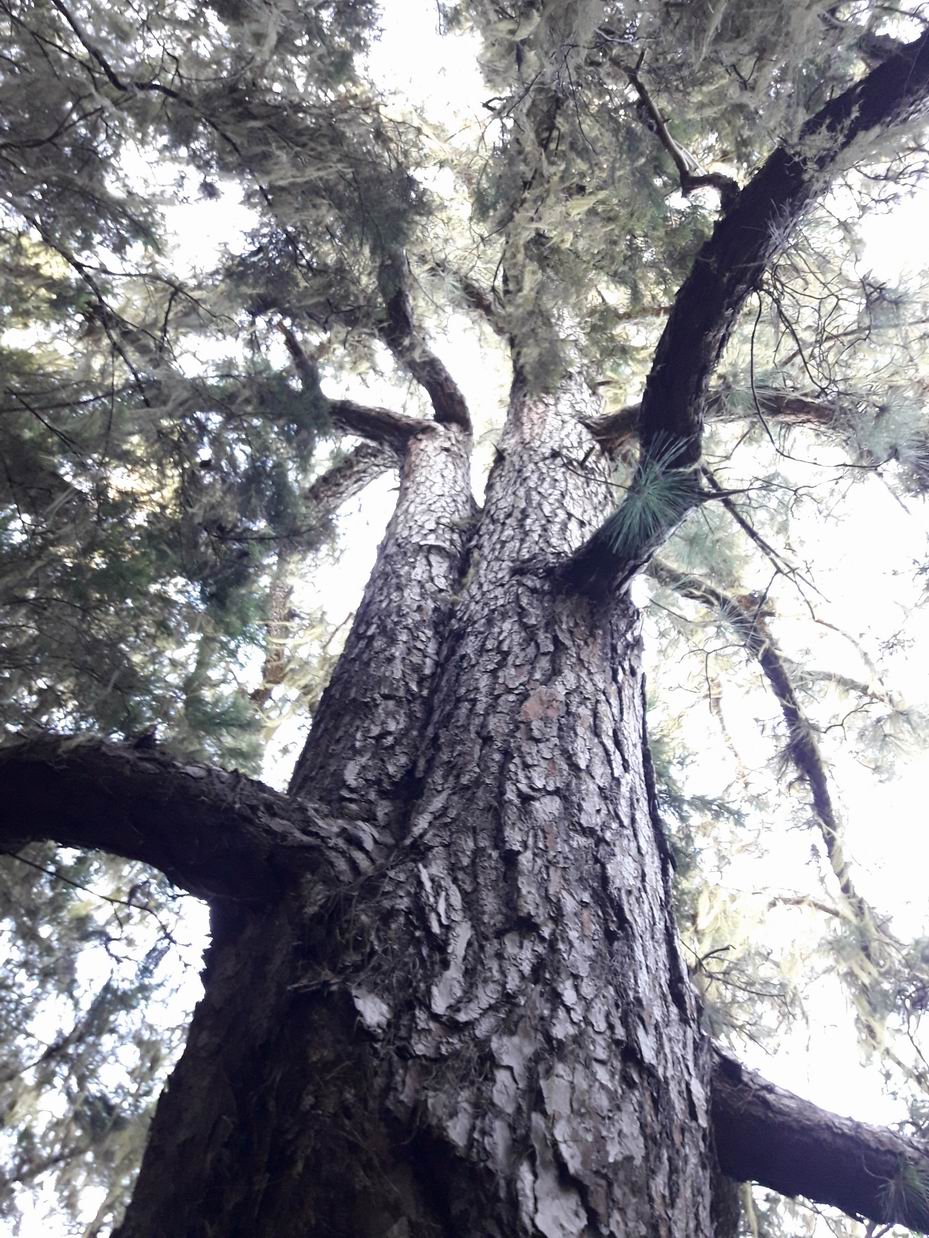
Related trails:
- Pino Negro (La Orotava). This is a huge pine tree that is a well-known landmark in the area, towering over other large pines. It is the oldest specimen in the area and is surrounded by mixed forest. Lichen hangs from its branches, giving it a ghostly appearance. It has a large limb branching sideways towards the Los Órganos track and although you are advised not to visit it as access is difficult, its crown can be seen from the track.
Related trails:
- Pino Punta de la Baranda (La Orotava). “Parent” pine tree that is a local landmark.
Related trails:
- Pino Camino de las Piedras (La Orotava). Pine tree located on the edge of a ravine, above the Aguamansa forest house.
Related trails:
- Pino del Sendero (La Orotava). Some branches of this pine tree nearly reach the hillside due to its enormous size. Three limbs branch out at two metres.
Related trails:
- Centennial Viñatigos (Tacoronte). Two specimens of viñatigo (Persea indica) surrounded by suckers in the form of a cage. One specimen on the western slope, 8 metres tall and with an approximate perimeter excluding the suckers of 8 metres; and another larger specimen on the eastern slope. The latter is located above an artificial cave and is approximately 10 metres tall. Its perimeter is difficult to measure, but the outer perimeter, including the suckers, is 16 metres, and the inner perimeter is 12.20 metres. The largest of the suckers could alone pass for a large tree with a circumference of 410 centimetres.
Related trails:
- Faya Llano de los Viejos (San Cristóbal de La Laguna). This is a spectacular faya (Morella faya) due to its proportions. It towers above the rest of the forest. It is located at the beginning of the path that leads up to Cruz del Carmen.
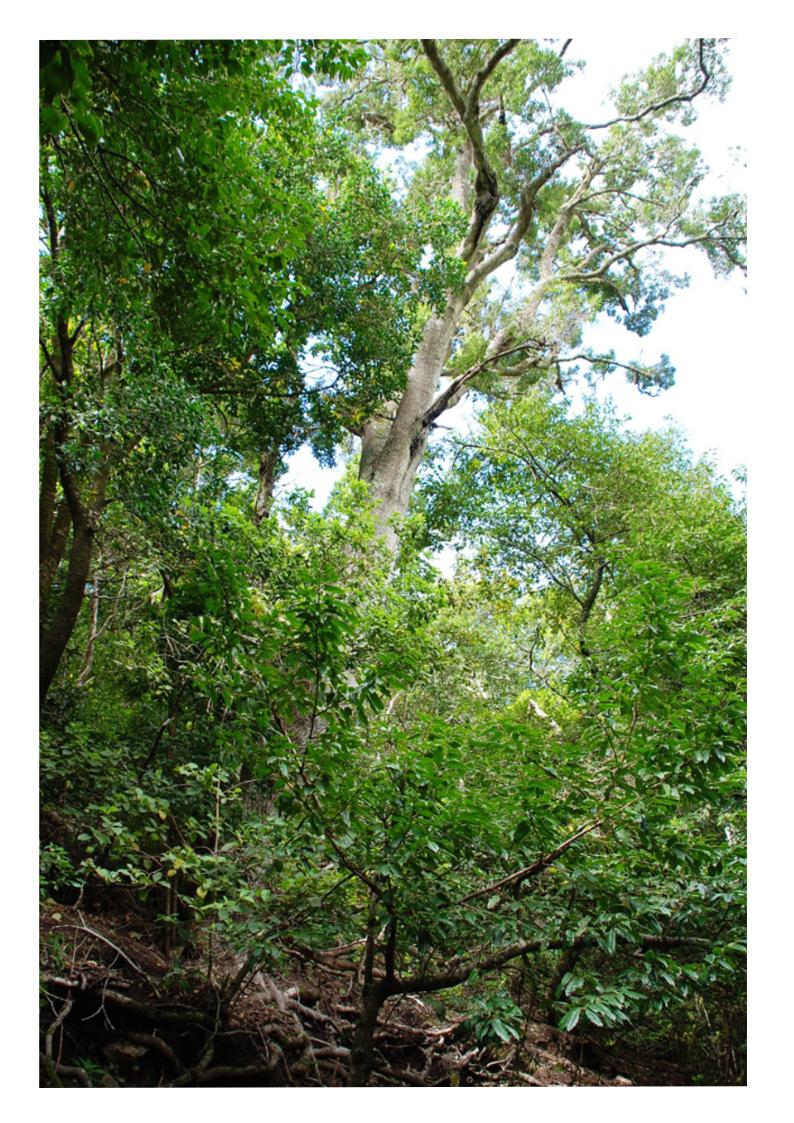
Related trail:
- Laurels of Llano de los Viejos (San Cristóbal de La Laguna). As with other trees of the Canary Island monteverde, when the main trunk of a laurel tree decays, it is replaced by suckers that sprout from the same tree. Therefore, although the trunk is different, the tree remains the same. The main trunk measures 680 centimetres in circumference, although only a stump remains. It has three large suckers measuring 250 centimetres in circumference, and the remains of a fourth. Epiphytic hare’s-foot fern (Davalliacanariensis). As it is in a recreational area, it faces heavy pressure from visitors.
Related trails:
- Barbusano (Canary laurel tree), Aguirre (Santa Cruz de Tenerife). Very twisted tree that branches out from its base. The main trunk is dead, but several limbs are still alive.
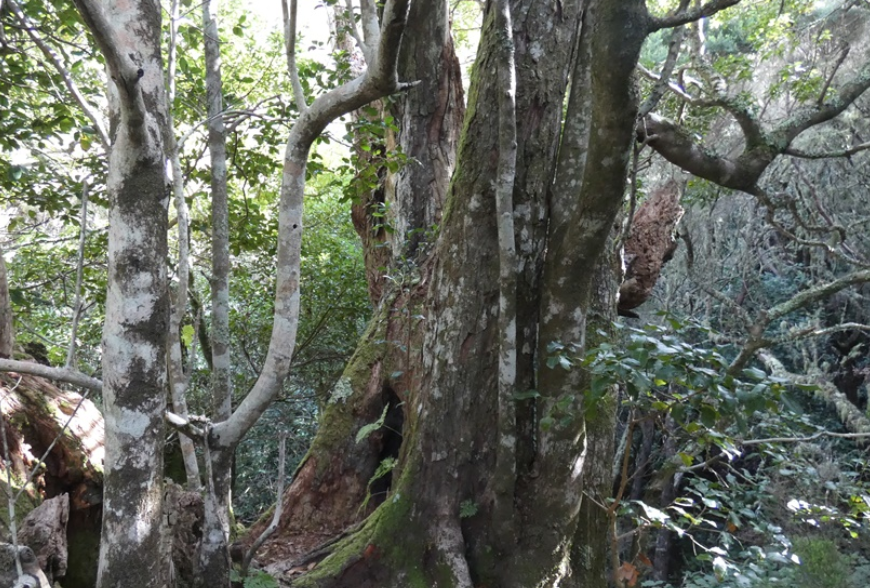
Related trails:
- Dragos del Cura (Santa Cruz de Tenerife). A Canary Island dragon tree (Dracaena draco) stands on the edge of a cultivated terrace, next to a wall, with an old wooden aqueduct running along its base. On the other side of the house there is another magnificent specimen of dragon tree which is visible from the road. It is around 240 years old, with 16 branches.
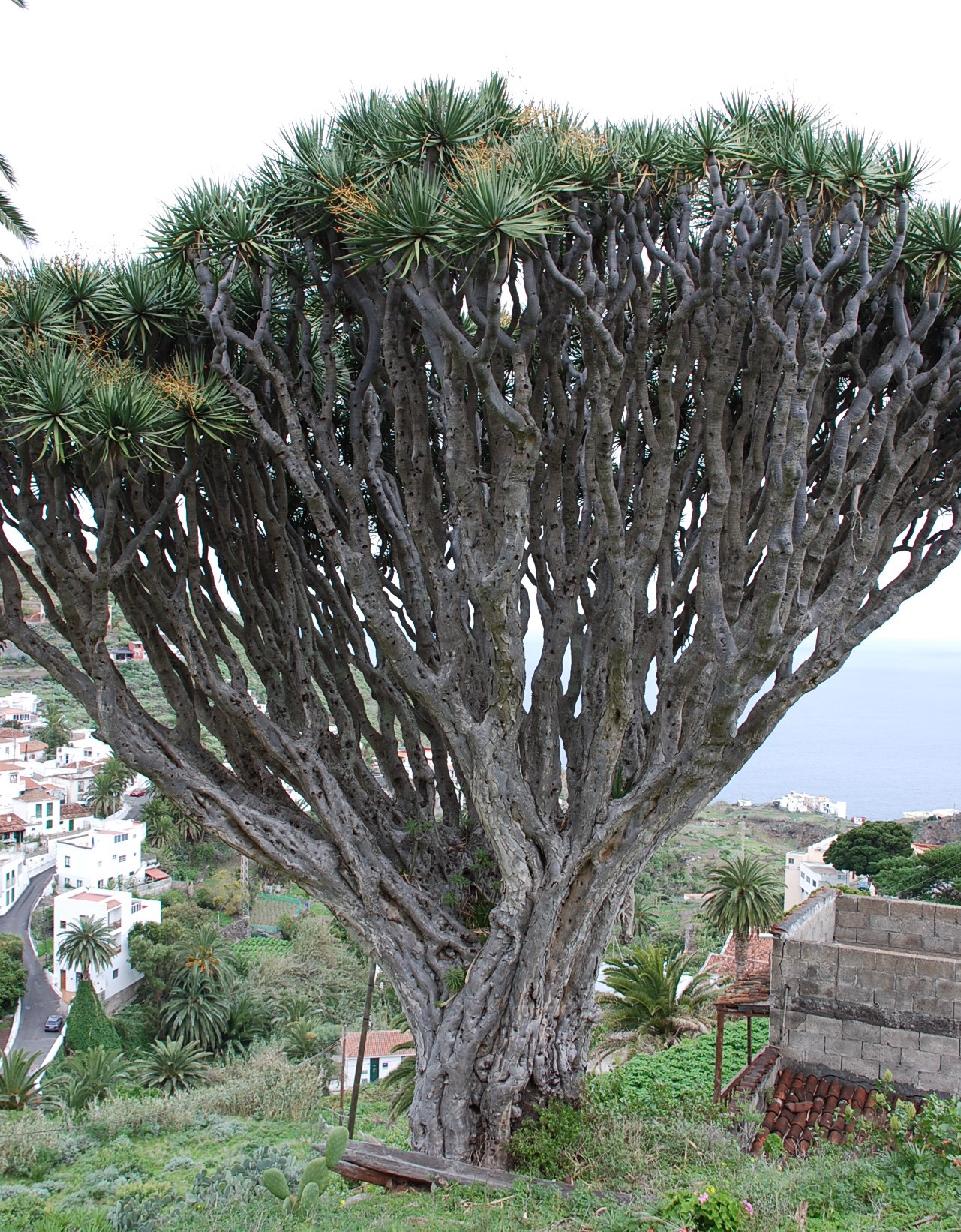
Related trails:
- Pino Gordo (Arico). The trunk of this pine tree forks at a height of 130 cm and has been used for signs indicating prohibited activities in the area, such as camping and making fires.
Related trails:
- Eucalyptus El Convento / El Conventito (Granadilla de Abona). The only eucalyptus tree in the area and one of the largest in the district.
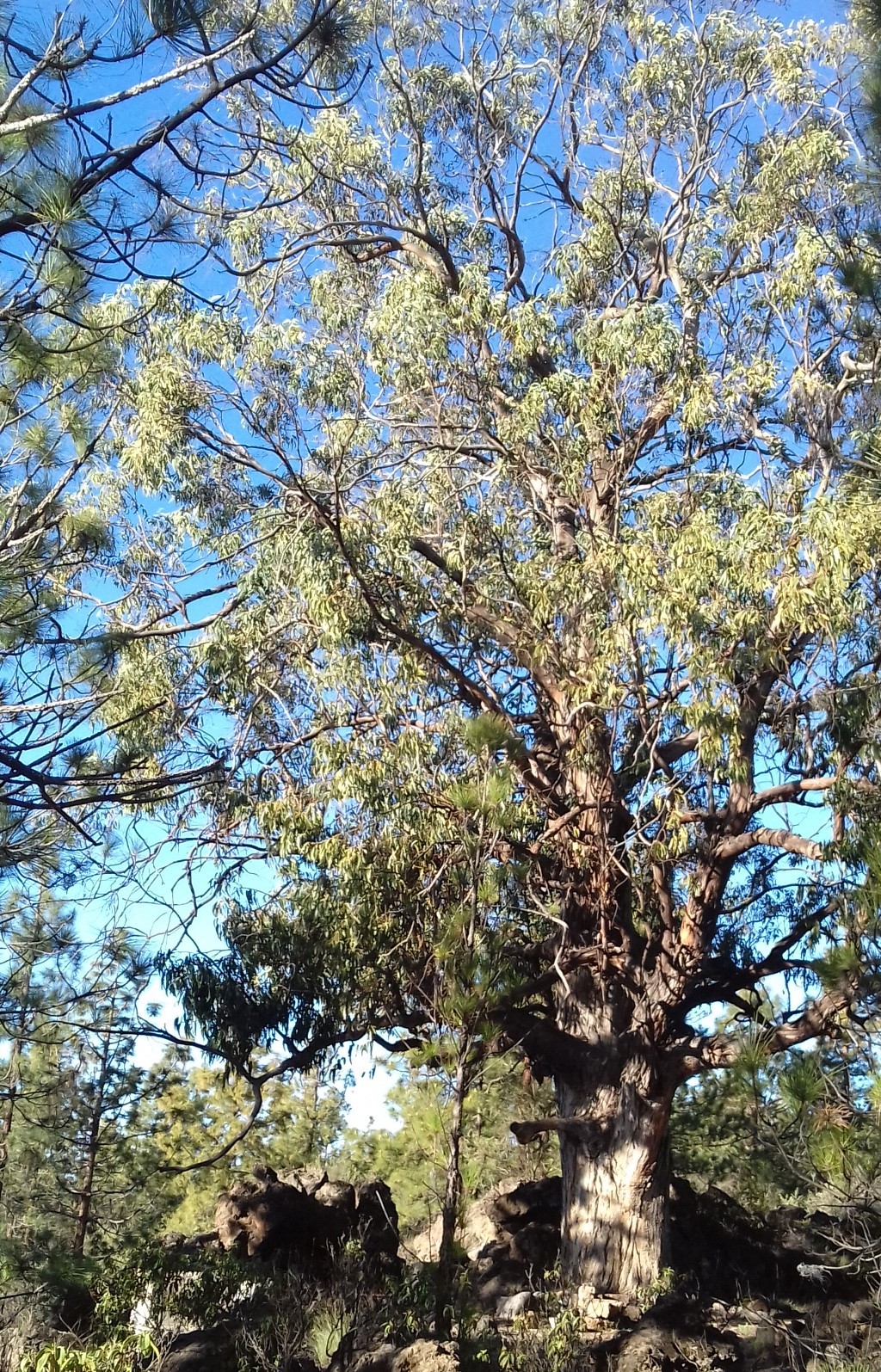
Related trail:
- Pino del Campanario (“Bell Tower Pine”) (Granadilla de Abona). This is the site of the bell of the Santa Ana chapel. The locals are proud to say that this is the only bell tower that grows every year. One of the branches of the pine tree is used to support the bell, hence its name.
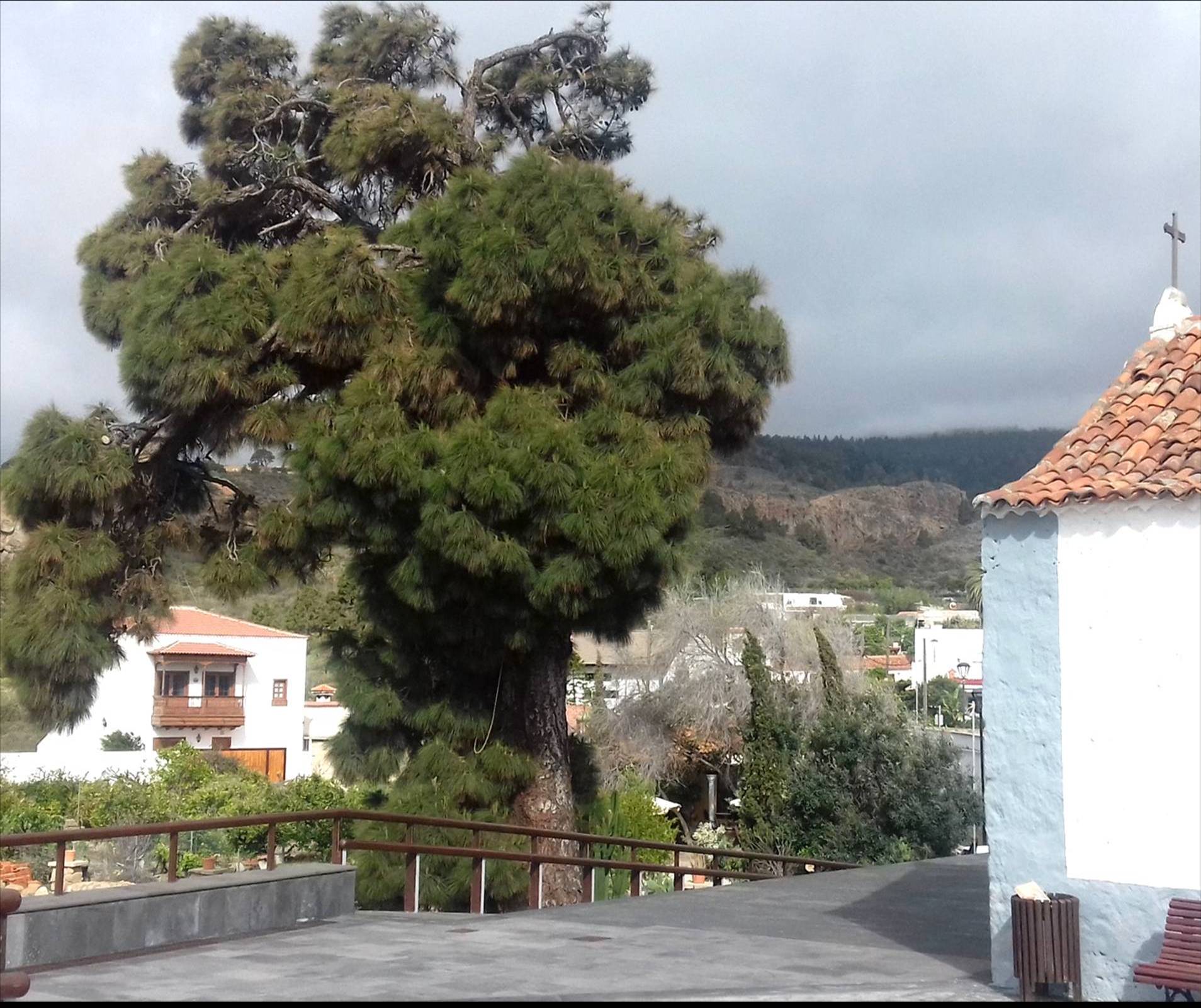
Related trails:
- Vilaflor Cypresses. A group of cypresses in the square in front of the church of San Pablo Apóstol.
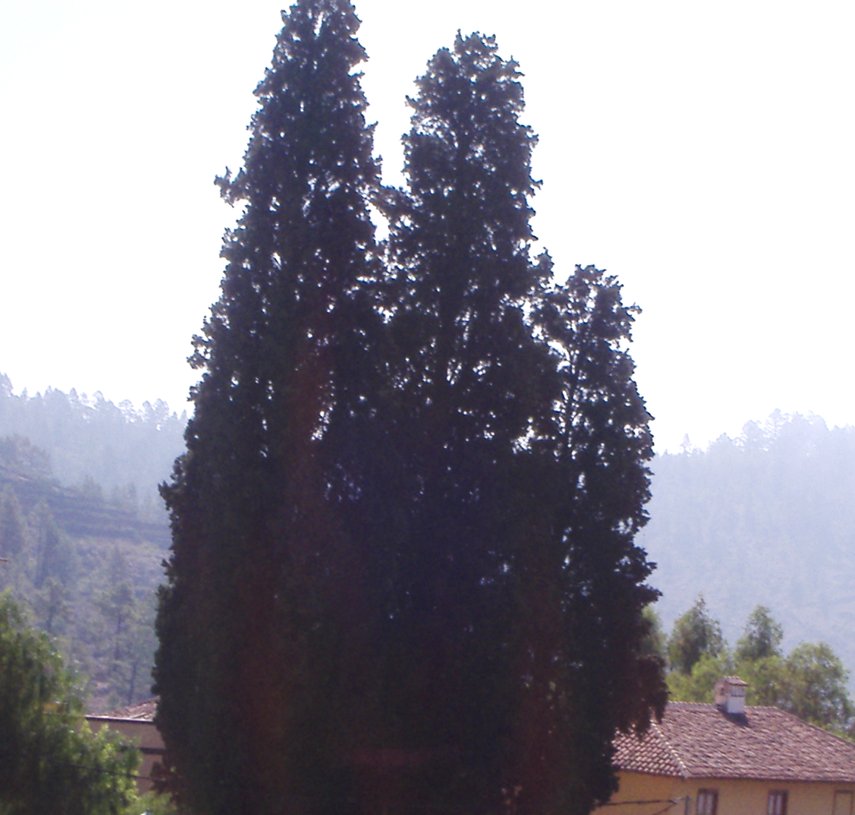
Related trails:
- San Roque Pines (Vilaflor). Very tall but sparse pine trees. The circumference of the first is 6.15 metres, and that of the second is 4.9 metres. Their height is approximately 25 and 20 metres respectively.
Related trails:
- Almácigo de Arona. In the old town centre of Arona stands an ancient Mount Atlas mastic tree or almácigo (Pistacia atlantica), nine metres tall, and listed in the Book of Monumental Trees of Tenerife. This tree is one of the symbols of the municipality’s heraldic coat of arms, and therefore forms part of its cultural heritage. There are other Mount Atlas mastic trees in Arona, alongside the road leading up to Vilaflor.
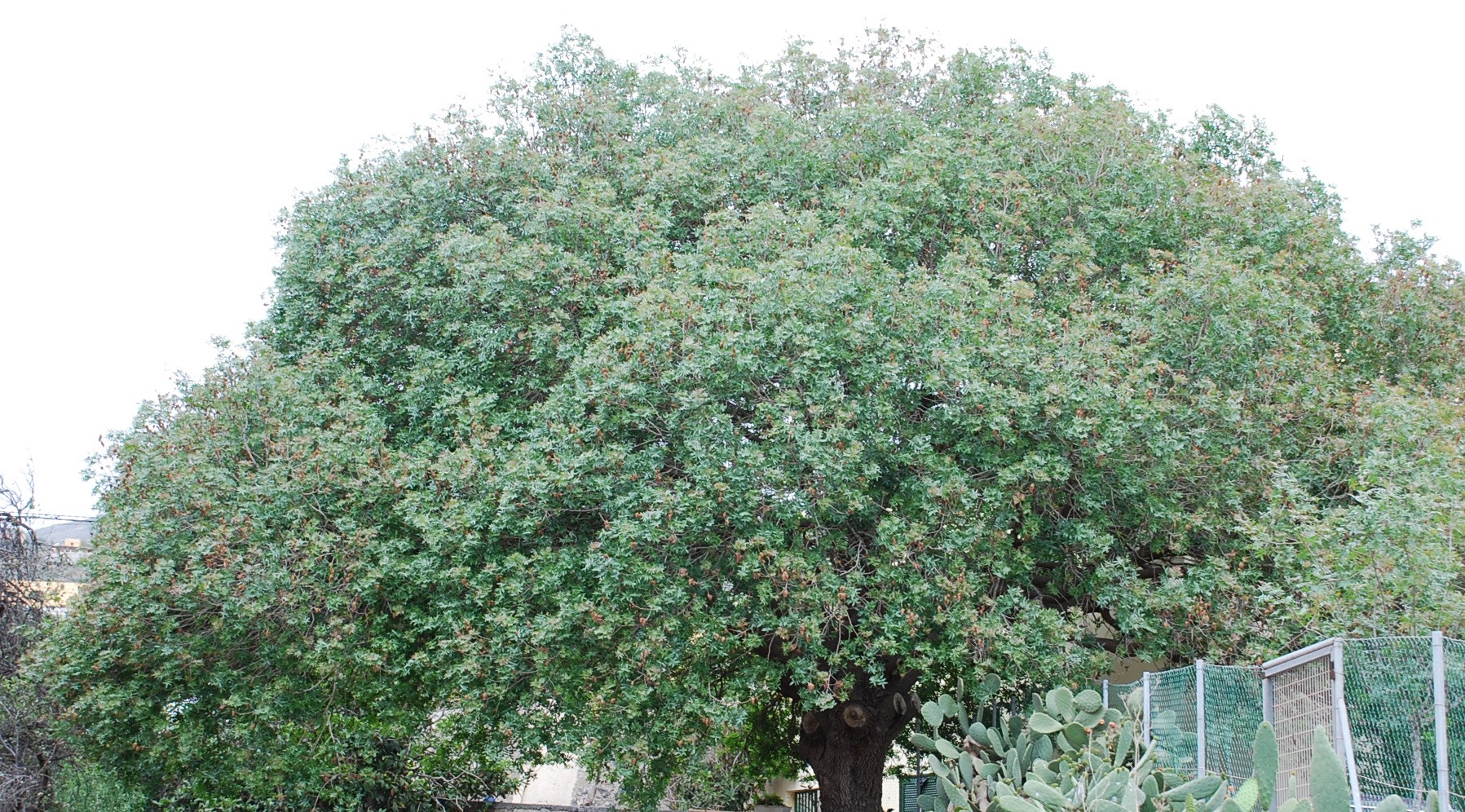
Related trail:
- Pino de las Cuatro Pernadas. “(Pine with four trunks”), located on a hill, close to other large pines used in the past to extract pine tar. It has a distinctive stunted shape, with four main limbs. It looks like a large four-armed candelabra, with a great 19-metre branch stretching out to the NW. It is a grizzled survivor of several fires. In this part of the forest above the Tágara gallery, there was intense activity during the 18th and 19th centuries related to the pitch industry for caulking ships. The area is therefore dotted with pine trees that were tapped for their pine tar, of great economic importance for the area.
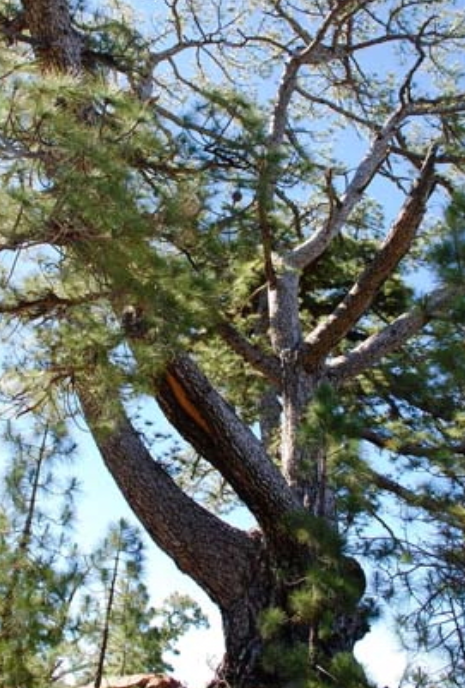
Related trails:
- Fig tree, la China. The circumference of the tree measured at a height of 1.30 metres is 4.80 metres. The total height of the fig tree is 10 metres.
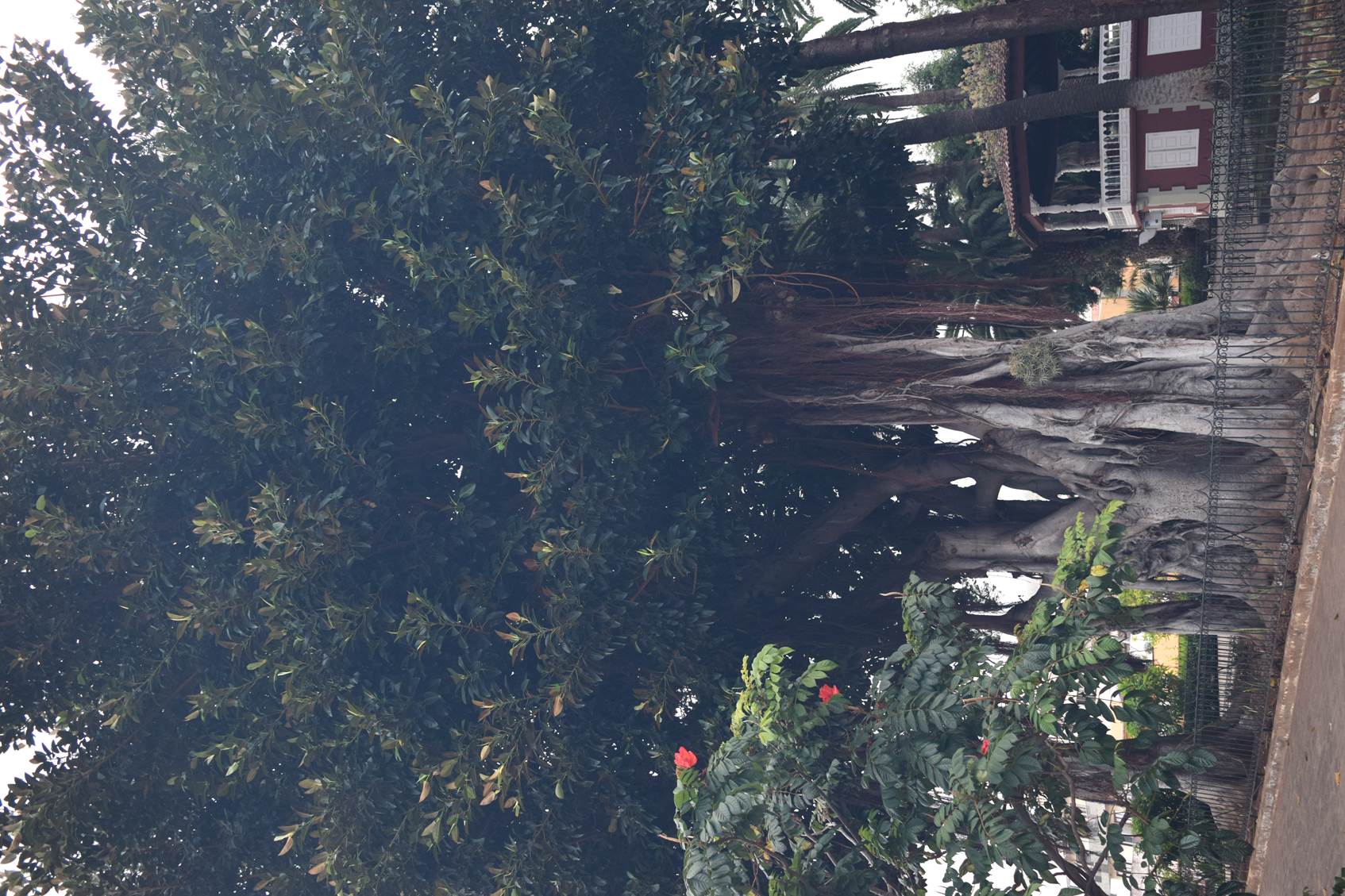
Related trails:





